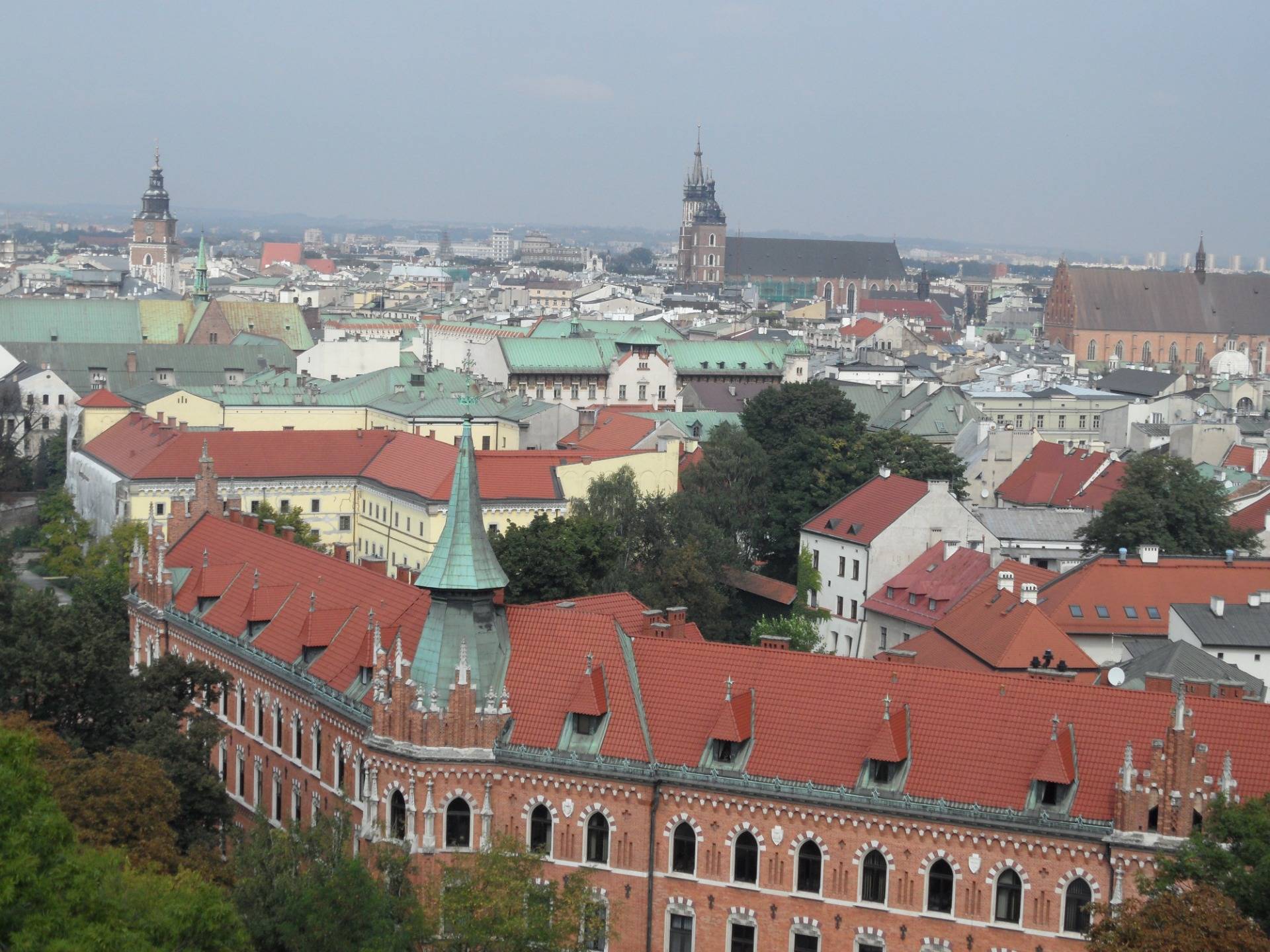I wrote this post in two languages. In English and Slovak language.
The royal city of Krakow is one of the most famous cities in Poland. It is the second largest city and at the same time the center of the Lesser Poland Voivodeship. We wandered around the Lesser Poland Voivodeship and we were very much looking forward to visiting Krakow, a city that is registered in UNESCO.
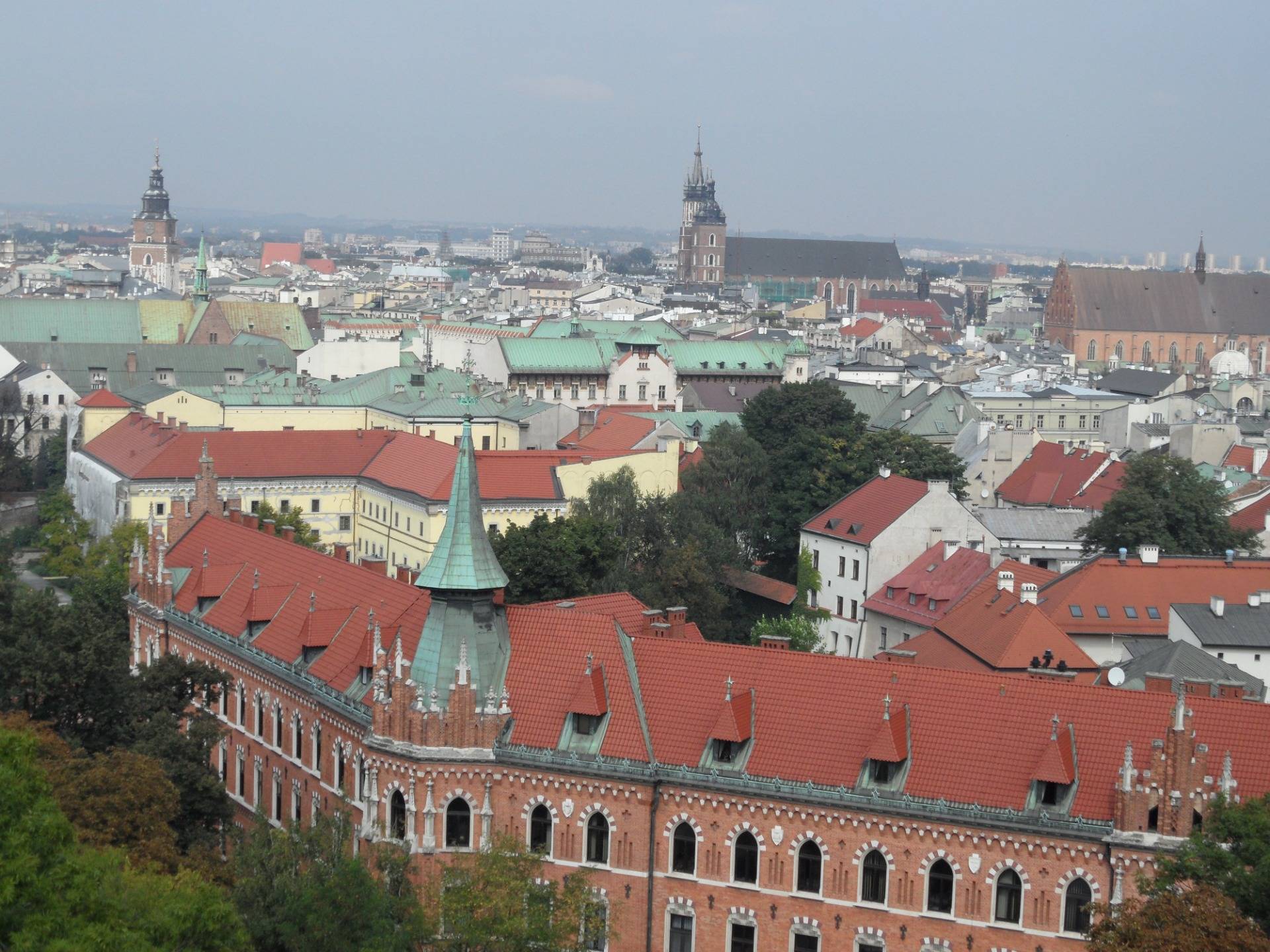
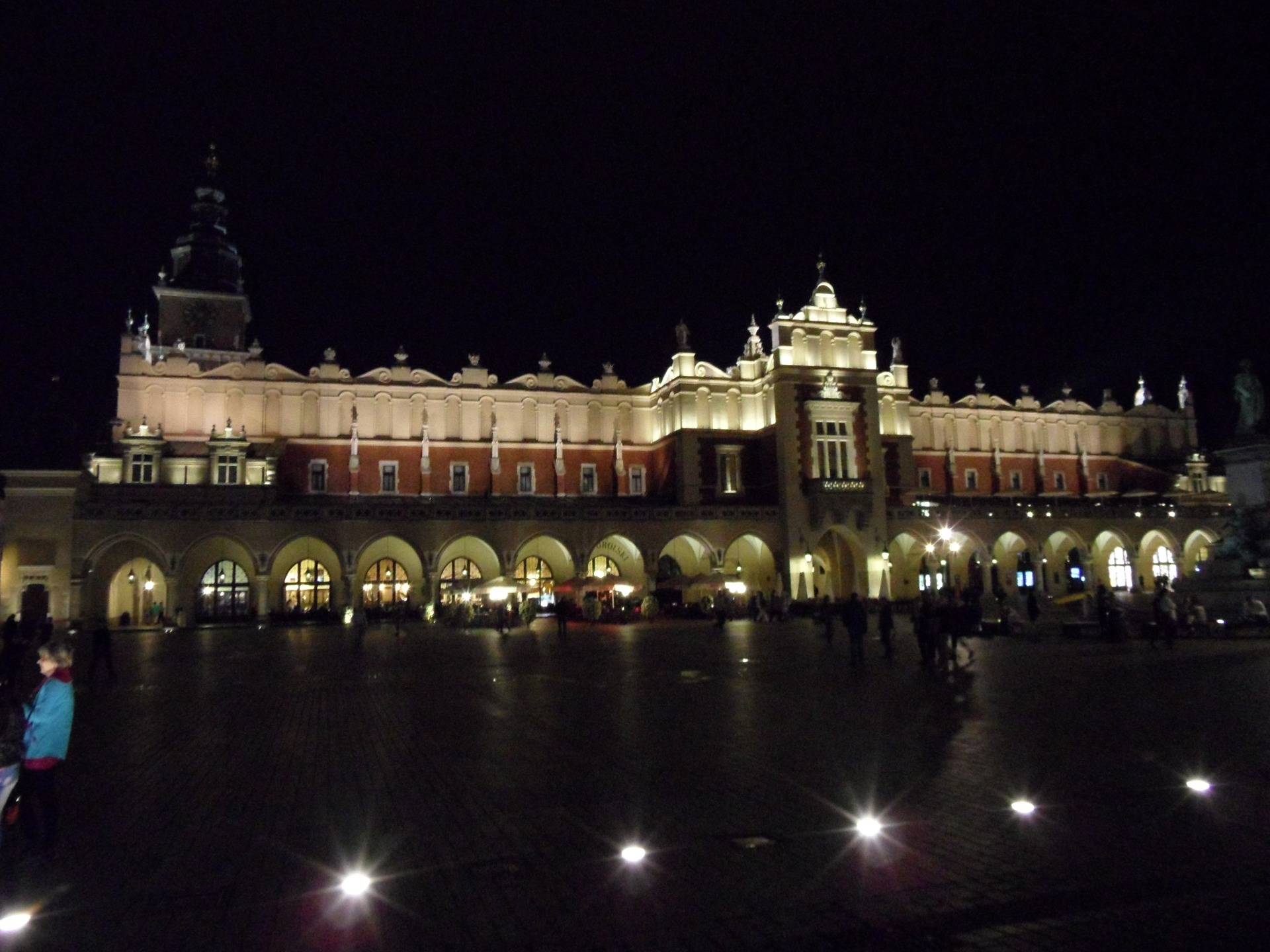
We arrived in the city already in the evening, but we were tired after a whole day of walking around the sights, which I wrote about in previous articles, so we decided to try local specialties in a beer hall. By specialties I mean beer. And also beer. In short, there were a little more beers, but we slept better and were ready for a full day of exploring Krakow.
We got up early in the morning and took a bus to the Kazimierz district. Today, Kazimierz is a district of Krakow, but it wasn't always like that. It was an independent city until the 19th century and its task was to protect Kraków from the south. By the way, the city was founded in 1335, when King Kazimierz III issued Wielki charter.
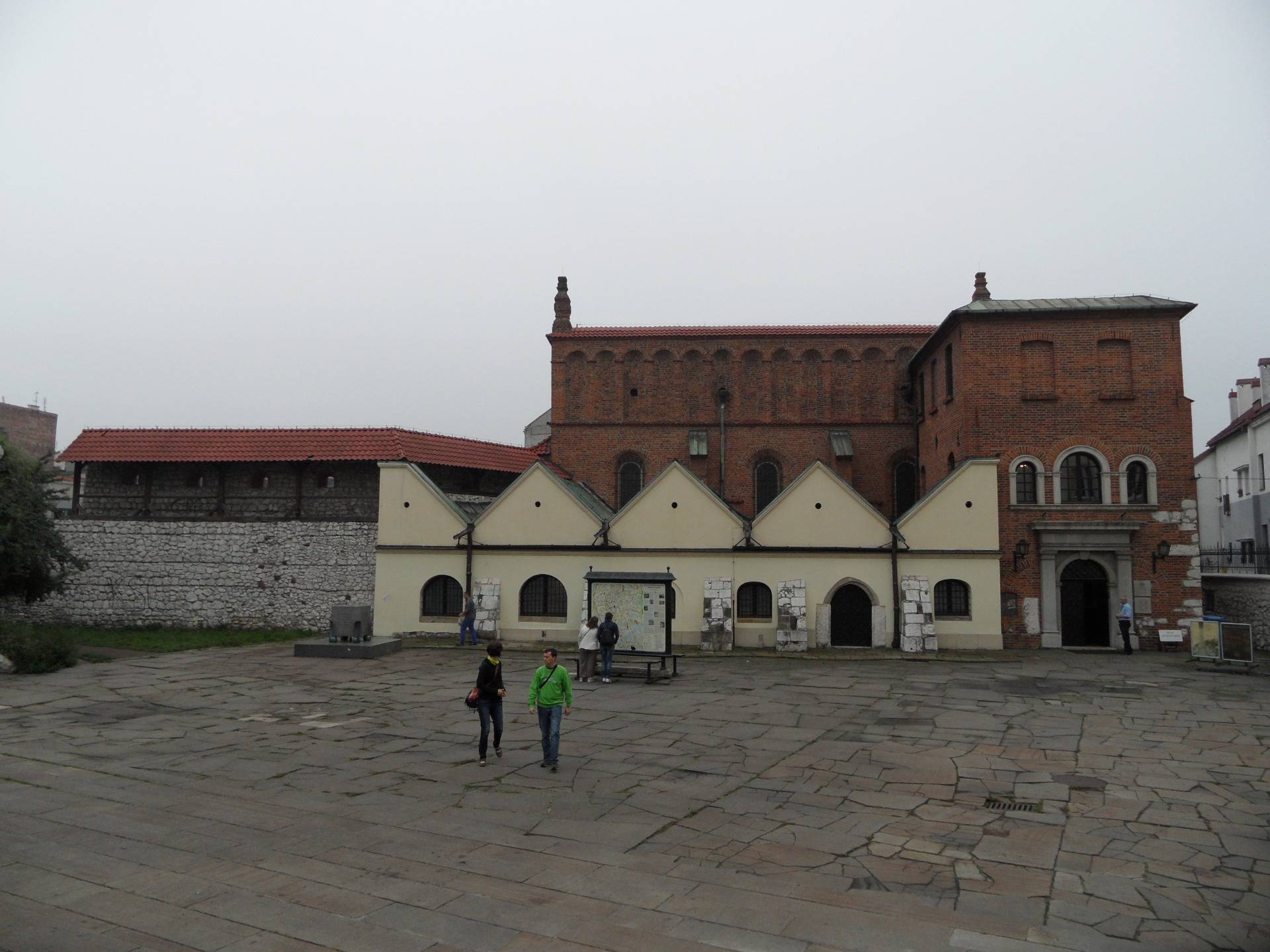
We stopped with our bus in front of one of the many synagogues. The Old Synagogue was built in the 15th century and is the oldest synagogue in Poland. It was no coincidence that we stopped right by the synagogue. The city of Kazimierz became an important center of Jewish culture. It all started in 1495, when the Polish king John I. had all Krakow's Jews moved here.
The interesting thing is that it was the Jews who wanted to somehow separate themselves from the local population and asked the city council for permission to build their own inner wall. She agreed and the Jewish and Christian communities in Kazimierz were separated. Since then, the development of both communities took place separately. The wall separated the two communities until 1822.
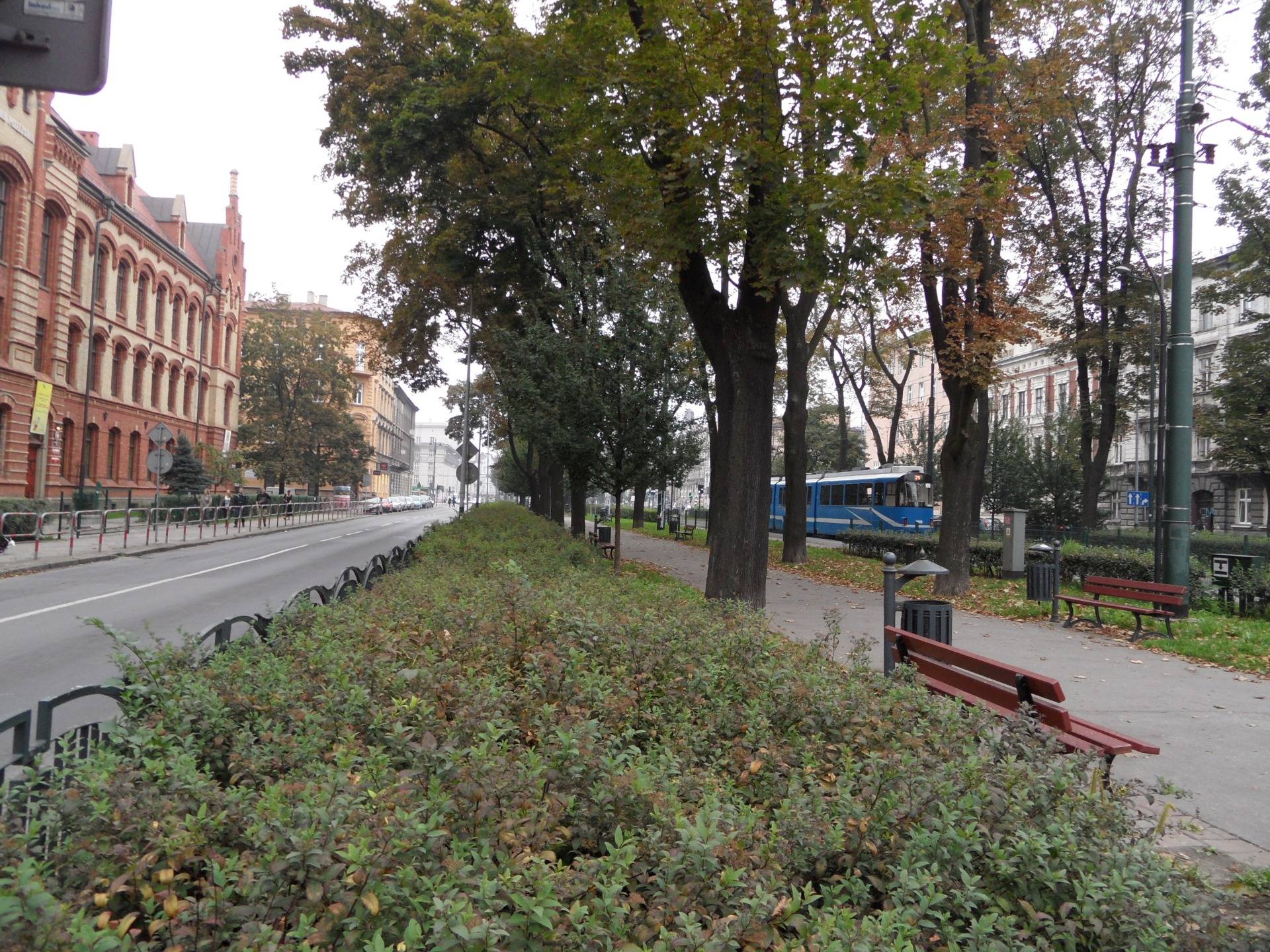
Kazimierz connected with the old city of Kraków symbolically by filling in and diverting one of the branches of the Vistula. This is how Stradom street was created, which connects the two cities.
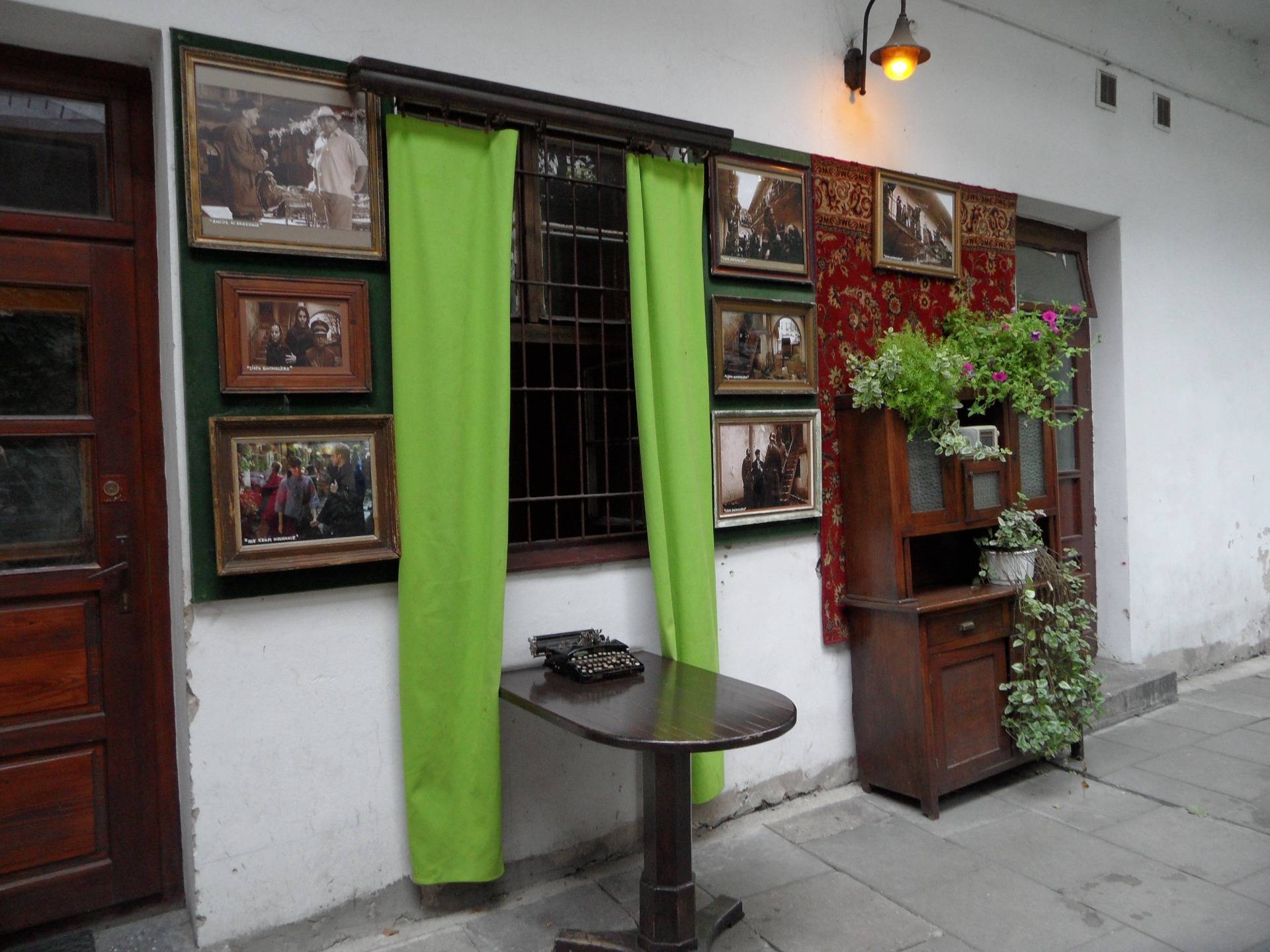
The centuries-old presence of Jews in Kazimierz ended during the Second World War, when only 3,000 of the originally 58,000 Krakow Jews lived to the end of the war.
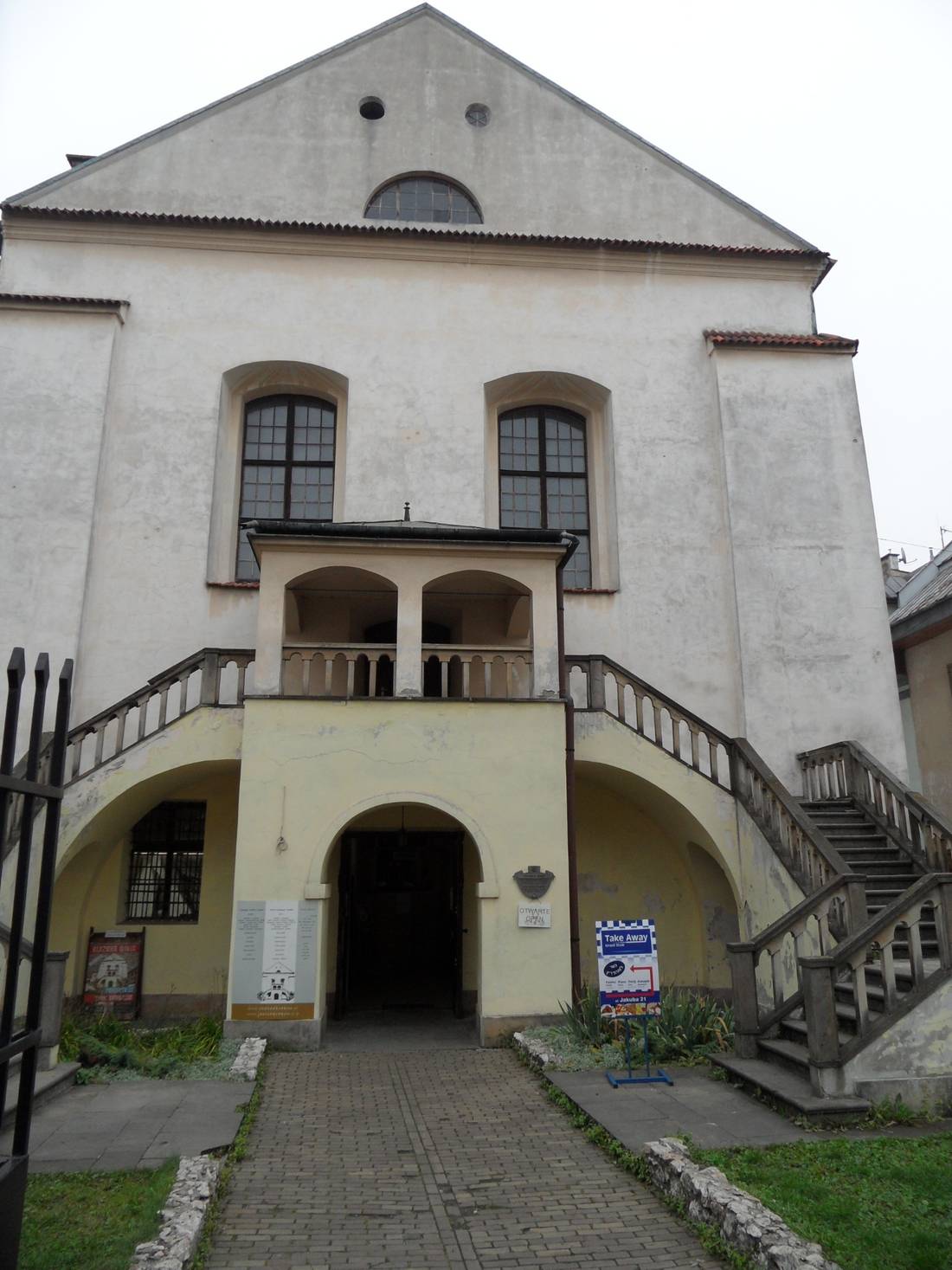
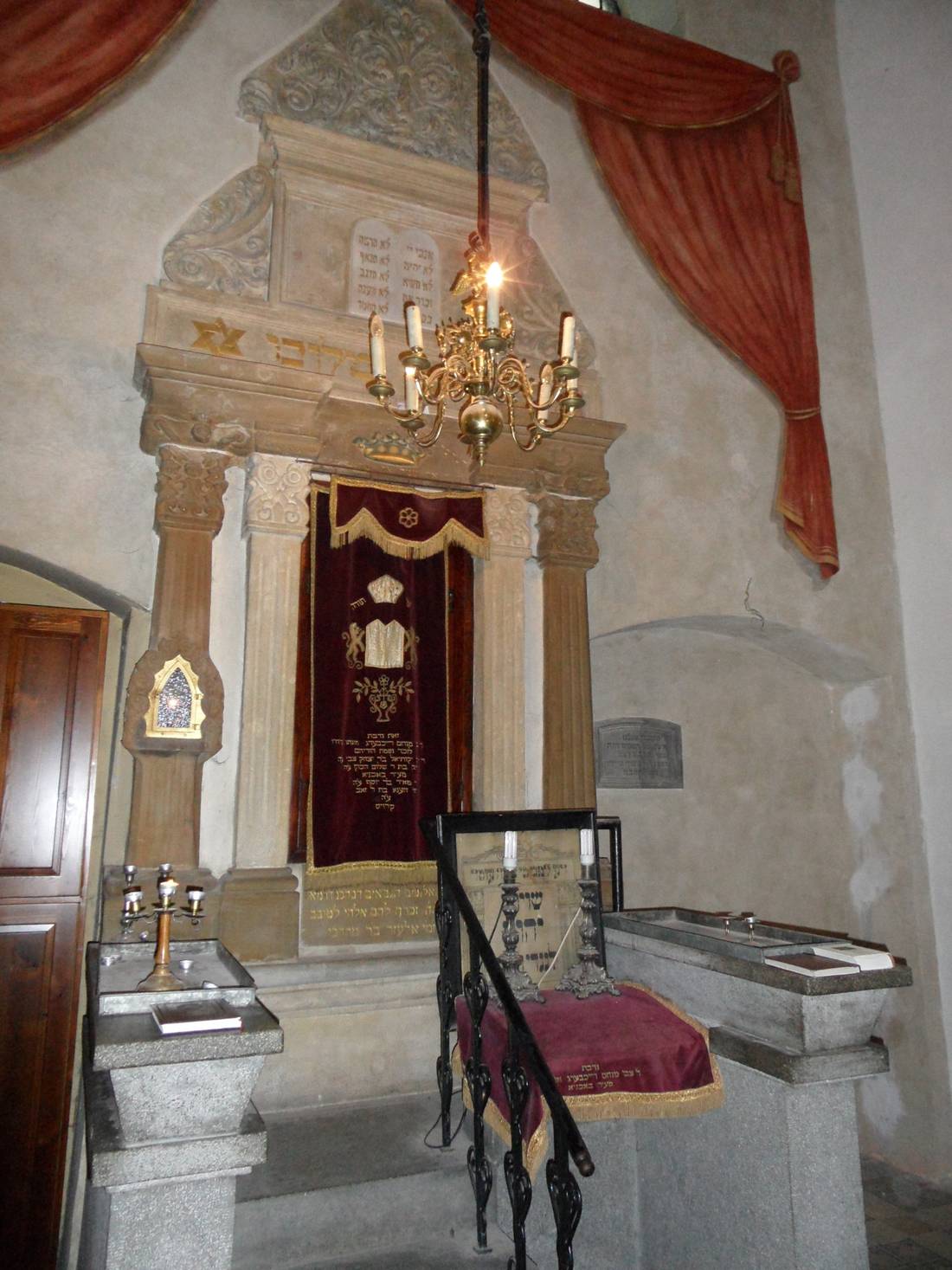
We come to another of the synagogues. We could not go to the Old Synagogue, but we are going to see the Remuh Synagogue. We put yarmulkes on our heads and go inside. It is a small synagogue, which probably originally served as a prayer room for the close circle of family and friends of Israel ben Yosef. Later, it underwent several reconstructions and currently religious services are held there. It was built in 1558.
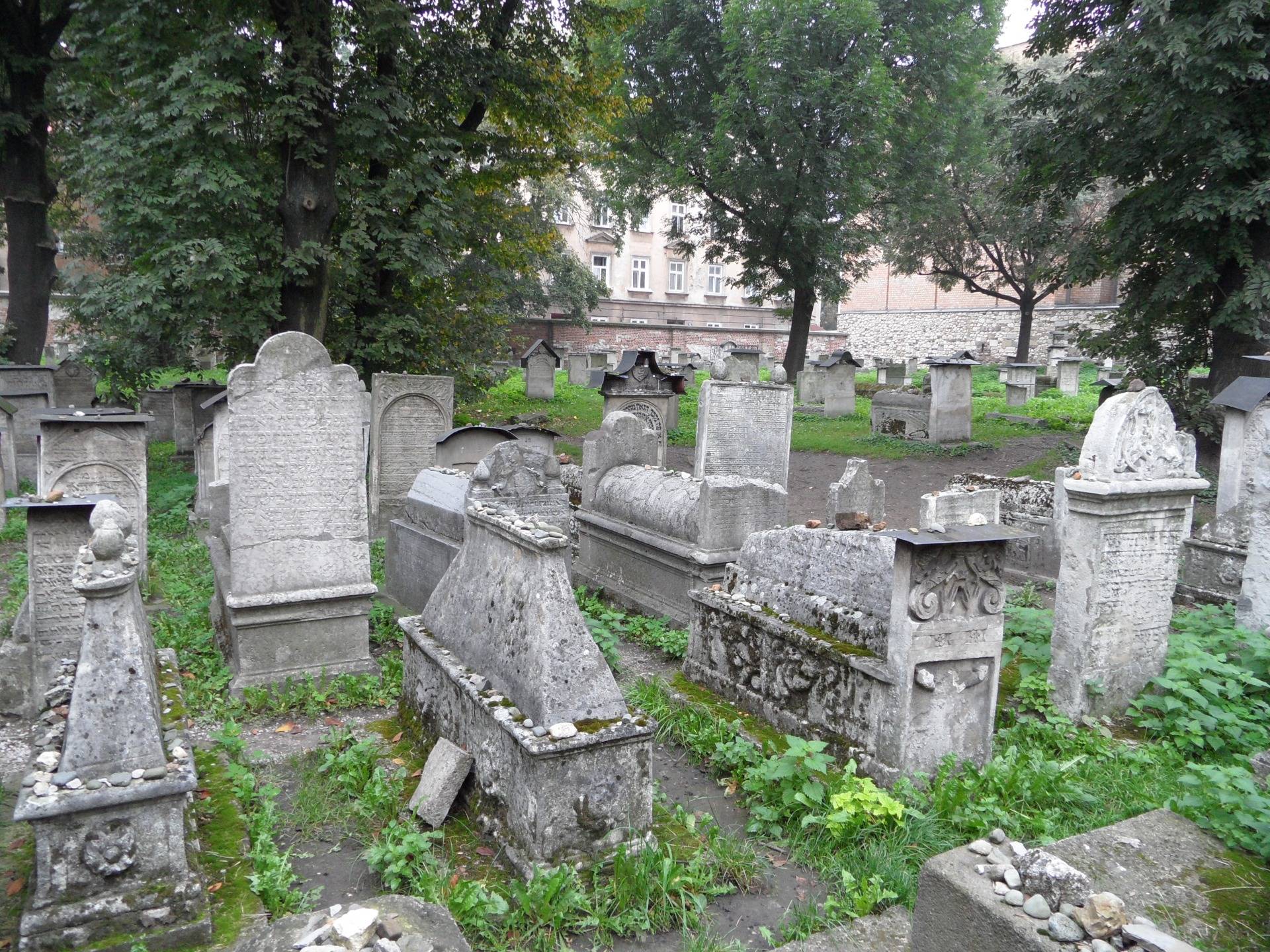
We continue the tour. The synagogue also includes a cemetery, which also bears the name Remuh. It was founded in 1533 and was used until 1800. The cemetery is a place of pilgrimage for devout Jews because of the tombstone of Rabbi Moshe Isserles, who was considered one of the greatest scholars of his time. He is the author of many important legal works of Jewish law and philosophy.
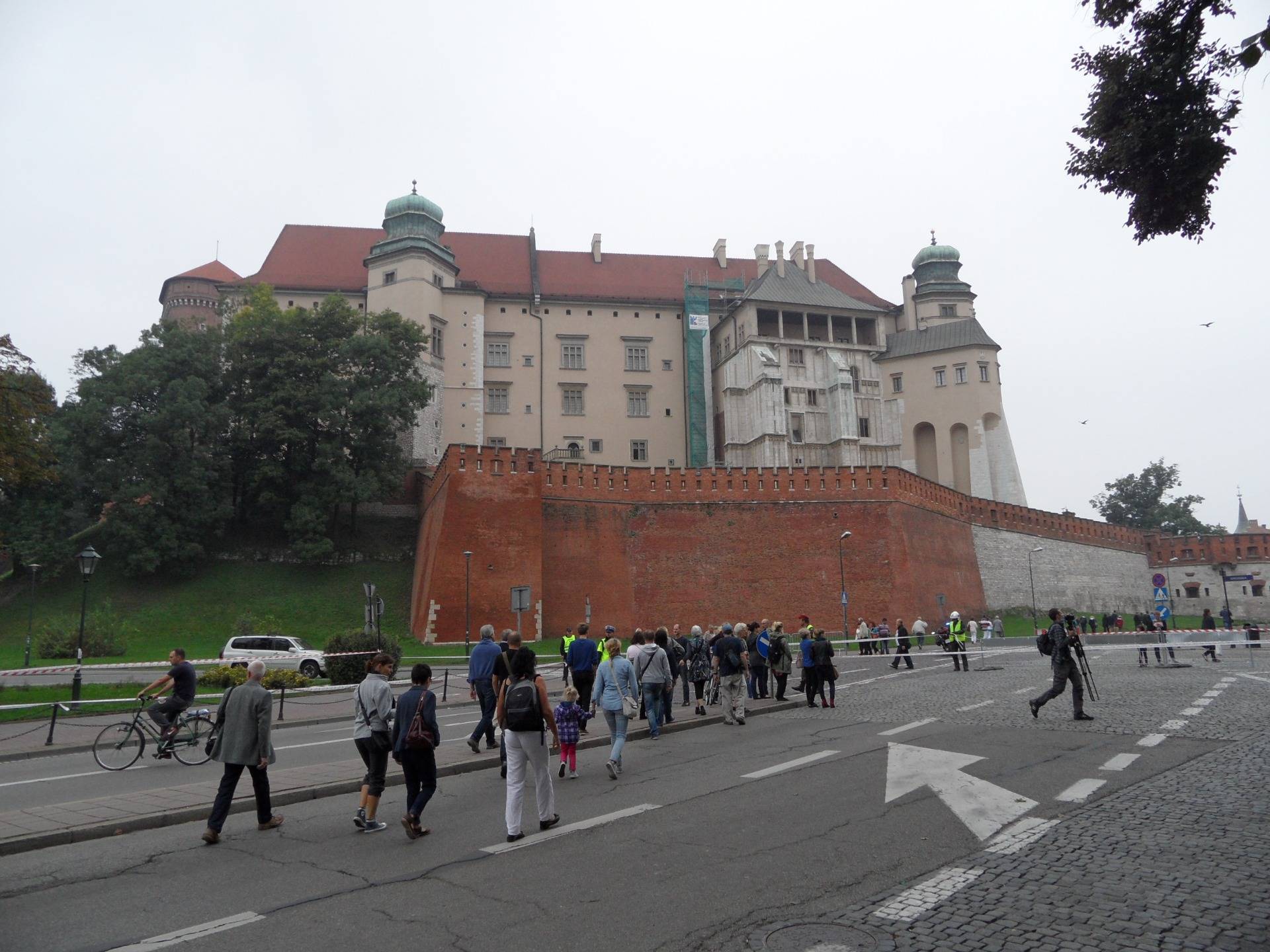
We return back to the bus, but we don't sit in it for long. After a while, we come to perhaps the most famous monument in the city, the Wawel Castle. Wawel Castle was built in the 10th century, although the city itself is a bit older. From the very beginning it was an important place and center of power in Poland. Casimir III. Veľký had a Gothic castle built on Wawela, which became the basis of the current castle. However, it experienced its greatest boom during the reign of the Jagiellonians, who thoroughly rebuilt the residence in the years 1507-1536.
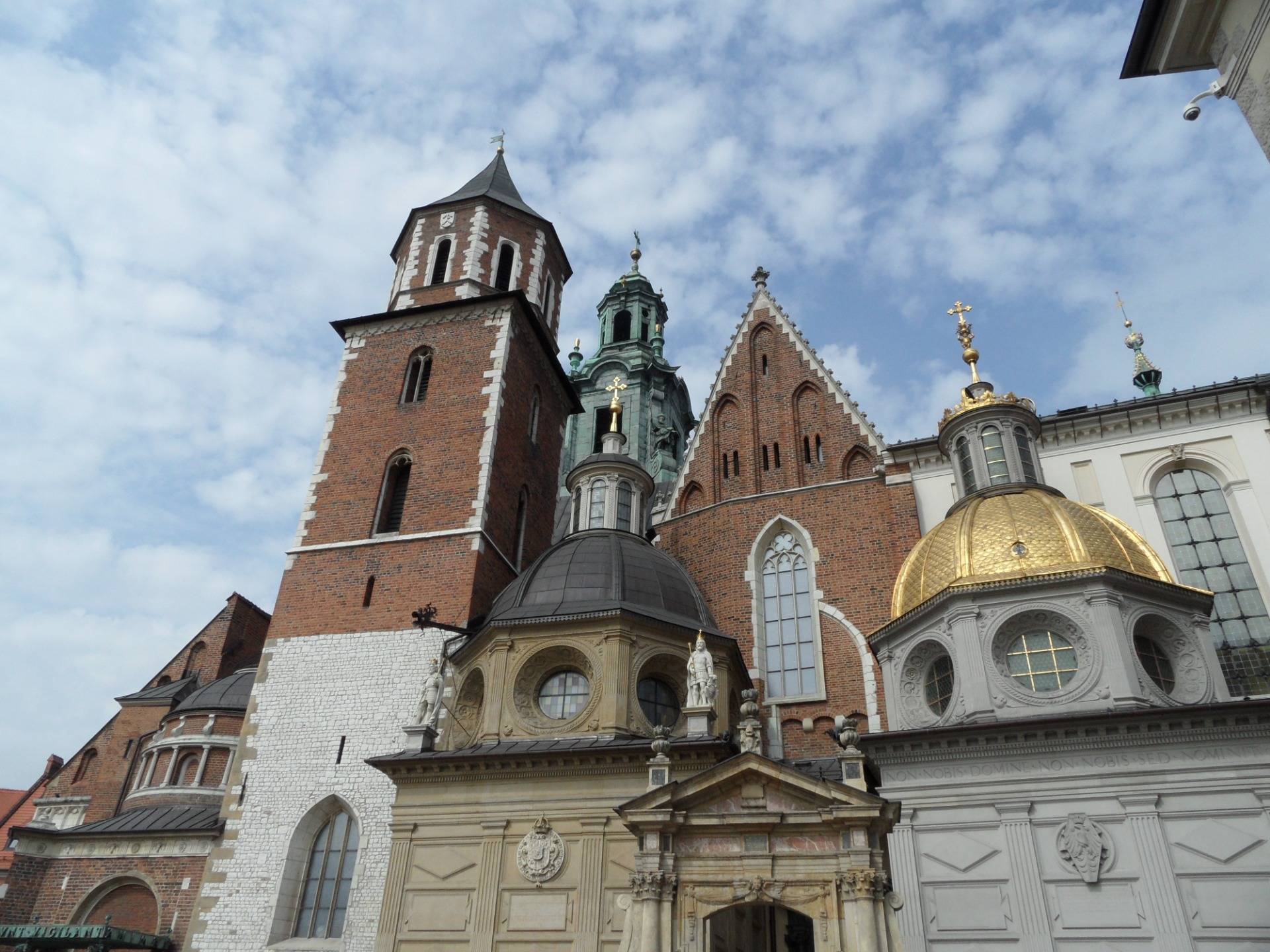
at the same time, they built a church on the castle hill, from where Christianity spread to a wide area. The Cathedral Basilica of Saint Stanislaus and Saint Wenceslas has become perhaps the most important place in Wawel Castle. We enter this historical place, but it is forbidden to take pictures in the temple, so we have nothing else to do but enjoy the decoration and keep this beauty in our memory. A chill runs down my spine when I imagine that the coronations of Polish kings took place in this place. By the stairs we went up, they came down like the rulers of a powerful country.
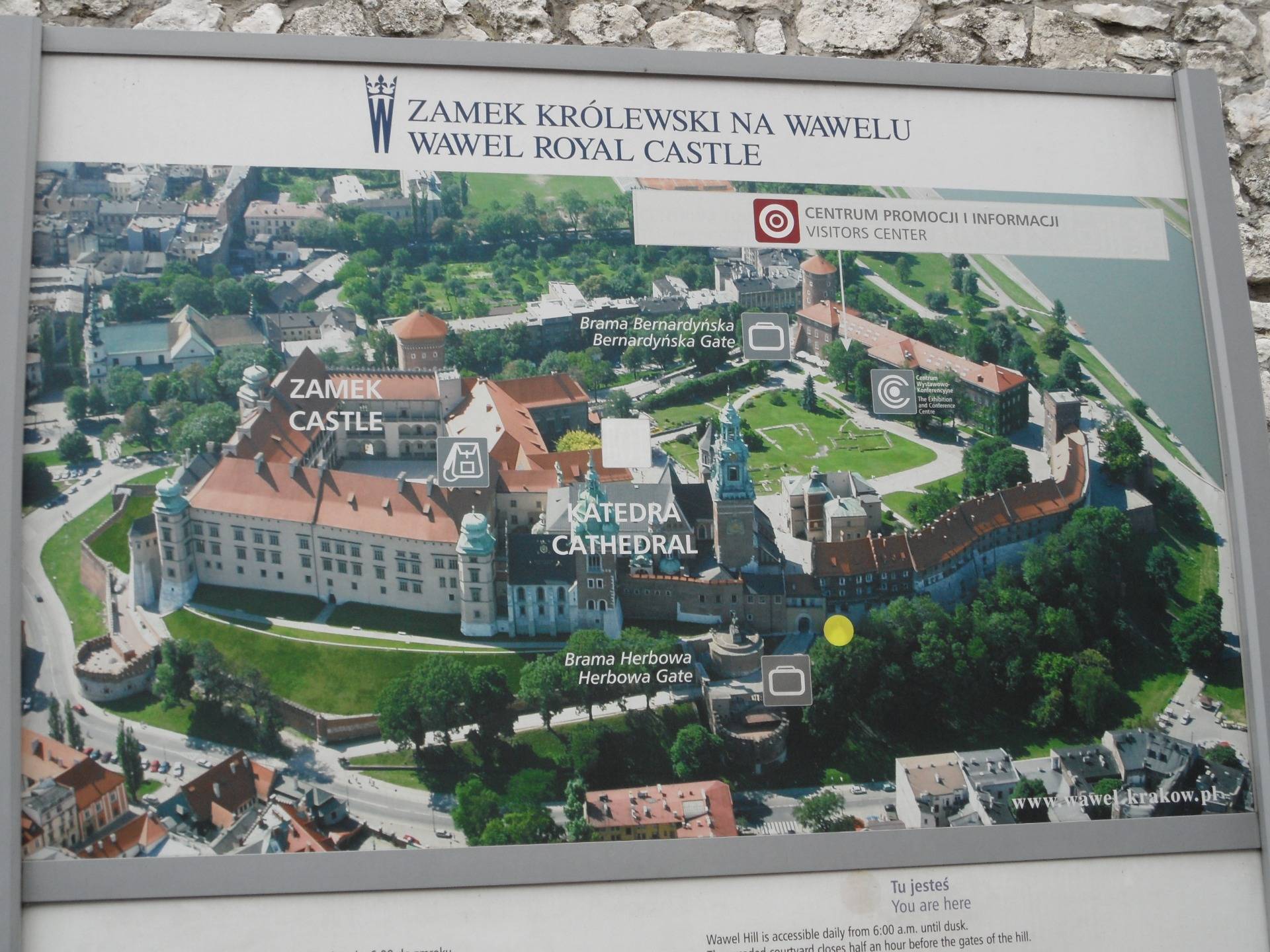
A change in the castle occurred in 1609, when the monarch decided to move his main seat to Warsaw. After all, Krakow was a city near the border, and Warsaw is located roughly in the middle of Poland. Wawel Castle began to decline with this decision.
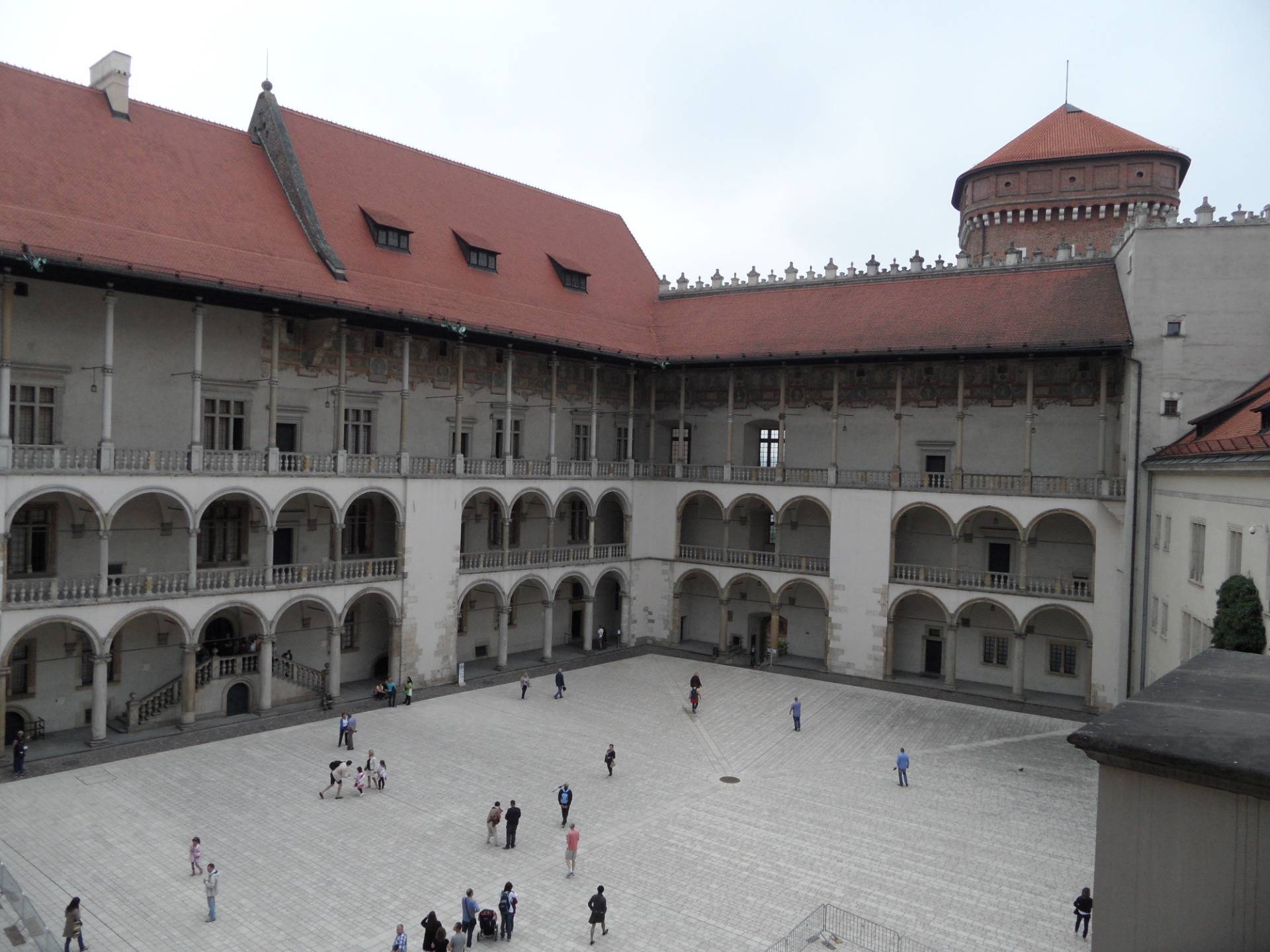
During the Swedish raid in 1655-1657, the castle was almost completely looted. The castle fell into disrepair, but the Wawel Cathedral continued to maintain its importance as the most important temple in Poland. Coronations of monarchs continued to take place in it, and members of the royal family were also buried here.
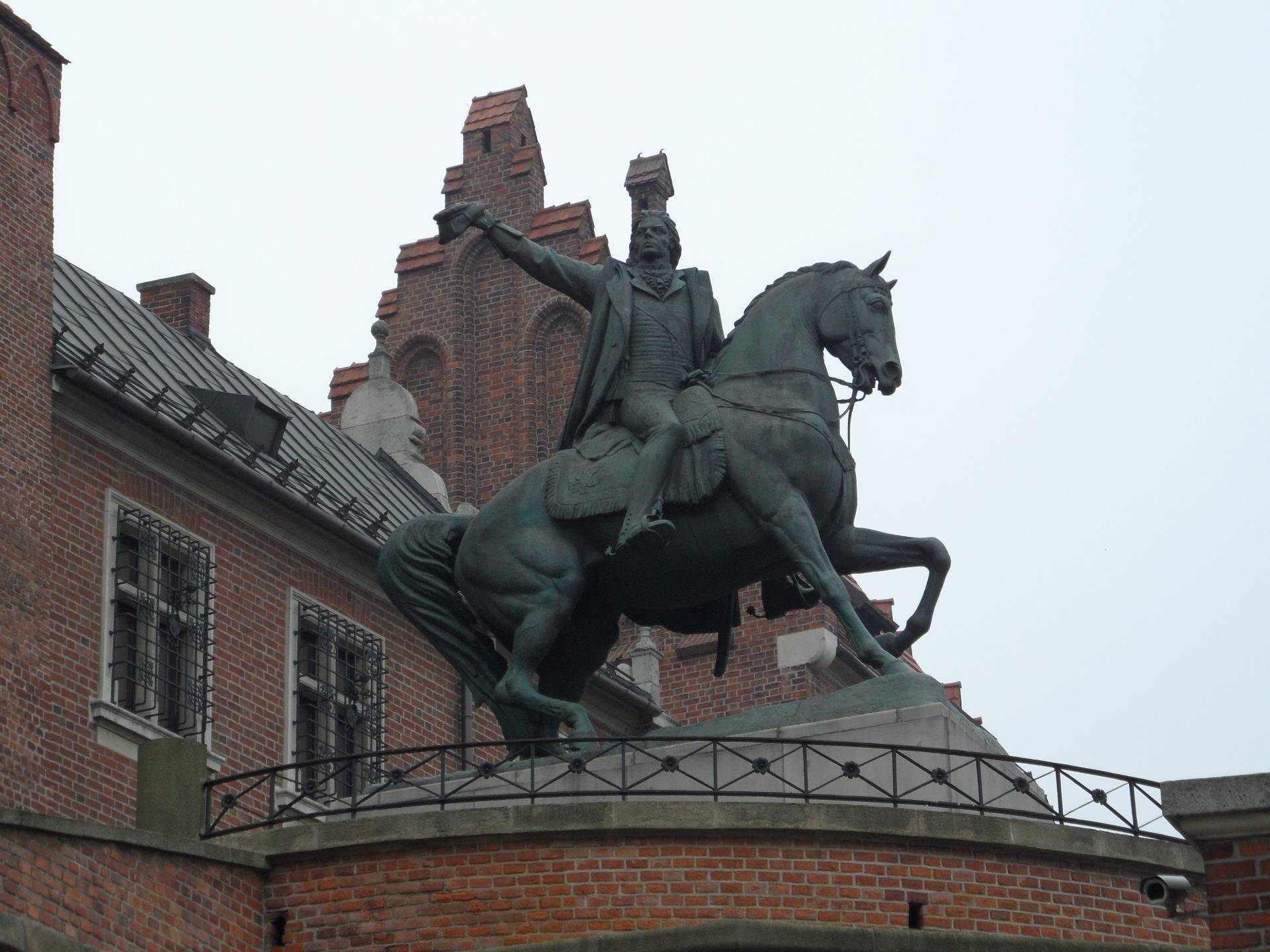
After the dissolution of Poland in 1795, Krakow fell to Austria. The castle became barracks and many historical and artistic parts of the complex were destroyed. In 1905, František Jozef I abolished the military garrison and the castle became a historical monument. In the interwar period, the castle was the seat of the Polish president. During the Nazi occupation, Hans Frank managed the so-called General Government.
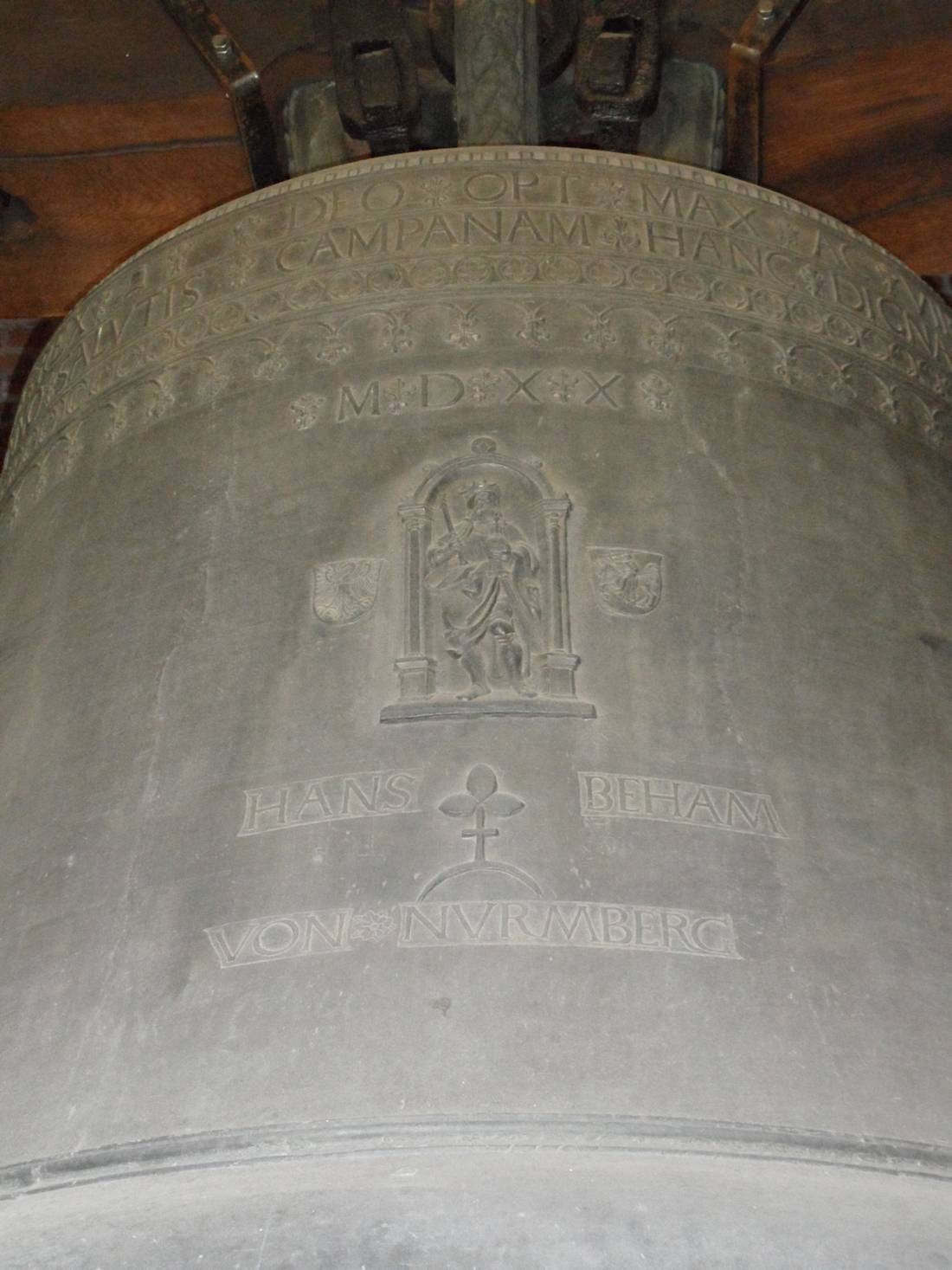
At the end of the tour of the castle, we climb the stairs. A little sweaty, we come to the big bell. This is the Zigmund bell. It was cast in 1520 and is the most famous bell in Poland that was used only on the most important occasions.
We've seen the castle, but it's time to go get something to eat and relax after the demanding tours. We go down from the castle hill and come to about the main entrance to the city. At least tourists come here.
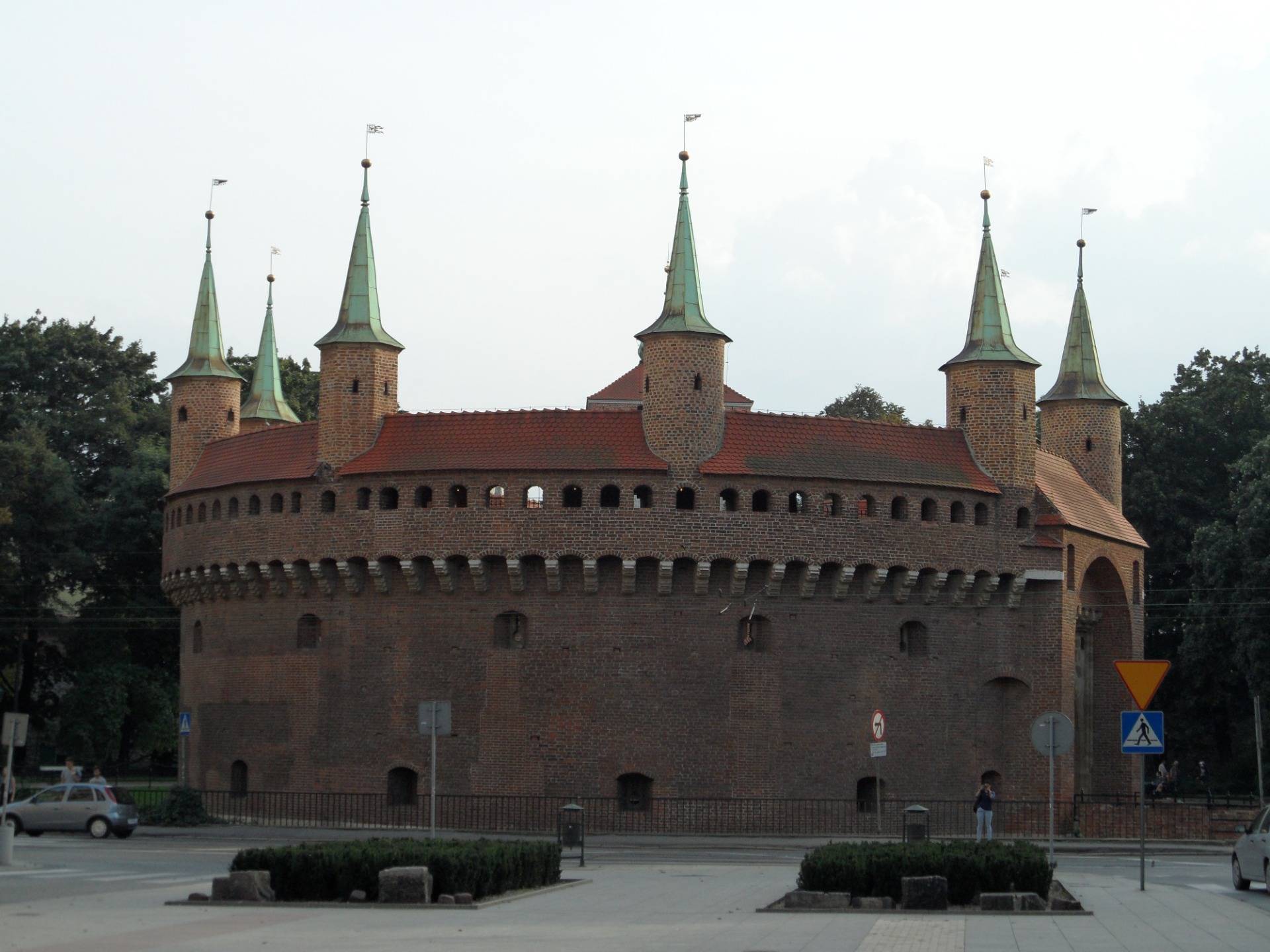
We take pictures of the Barbican, which served to defend the city. They built it in the 15th century.
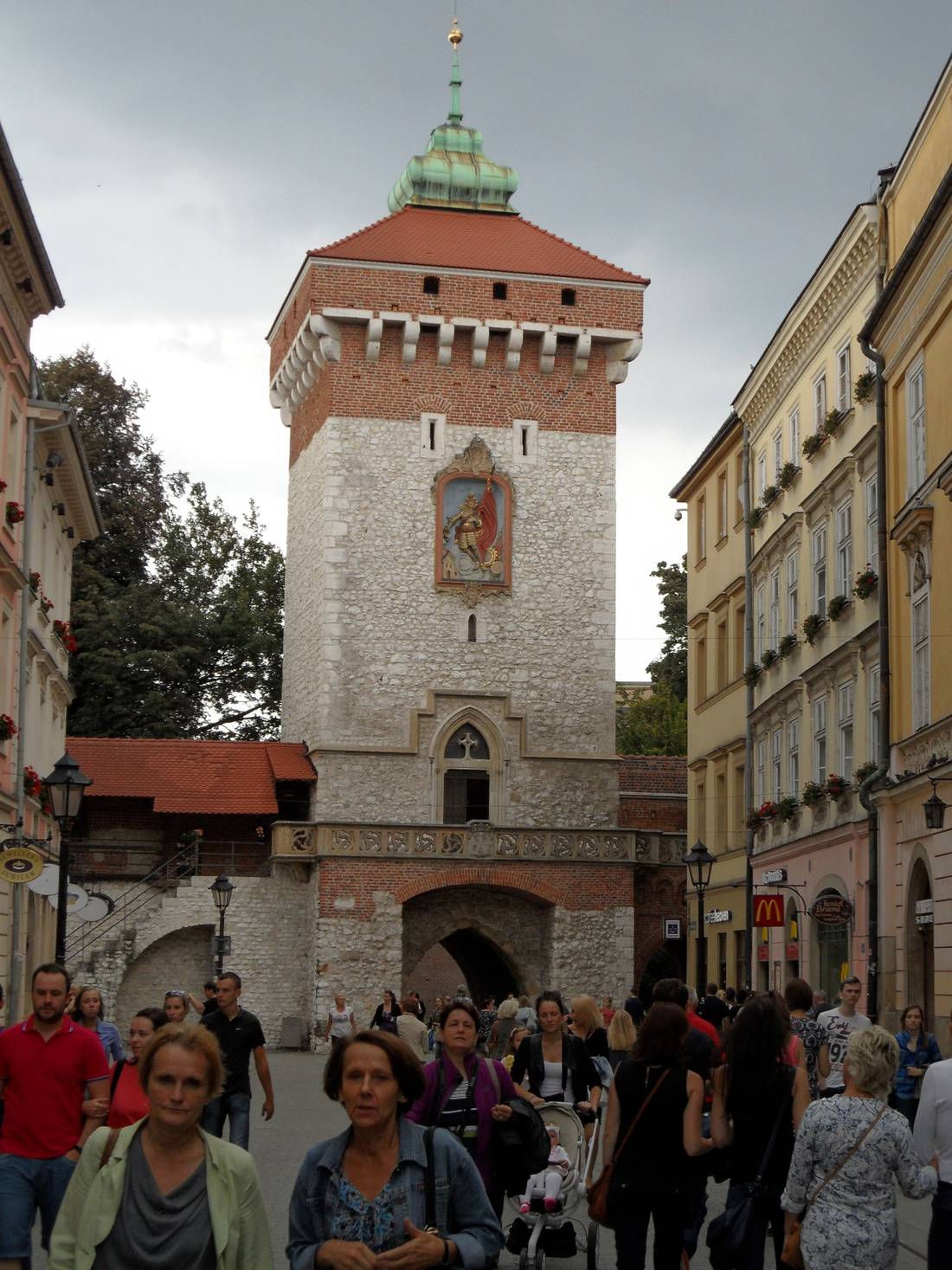
We pass under the Florian's Gate and we can say that we are in the old city of Krakow.
Now let's have some history again. The town was founded around the year 800 as a defensive castle of the Vislans. Around the year 999 it became part of Poland, and from 1038 Krakow was the seat of Poland until 1569 and from 1569 to 1596 of the Polish-Lithuanian Union. The city flourished in the 14th-16th centuries when it was a member of the Hanseatic League and from 1320 it became the crown city of Poland with the first Polish university, the Jagiellonian University founded in 1364. Krakow was famous for its cloth production. Since 1795, the city belonged to Austria, only in the years 1809-1815 it was part of the Principality of Warsaw, and in the years 1815-1846 it was the capital of the Kraków Republic. After the suppression of the Kraków uprising, it was again annexed to Austria-Hungary. Since 1918, the city has been part of Poland again.
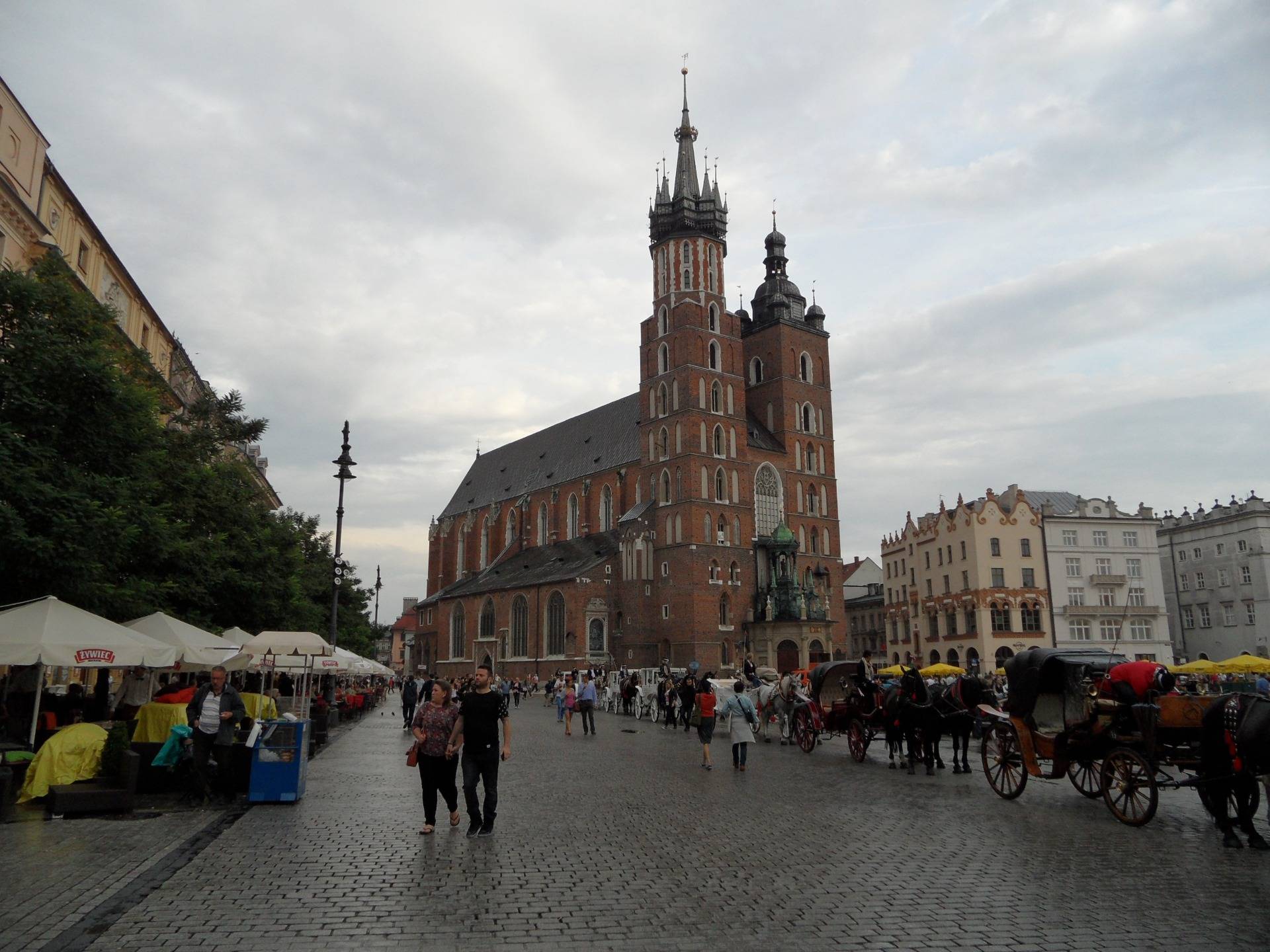
The dominant feature of the old town is the Basilica of the Assumption of the Blessed Virgin Mary (Bazylika Mariacka), which dates from the 13th century. Together with our guide, we went to see its insides.

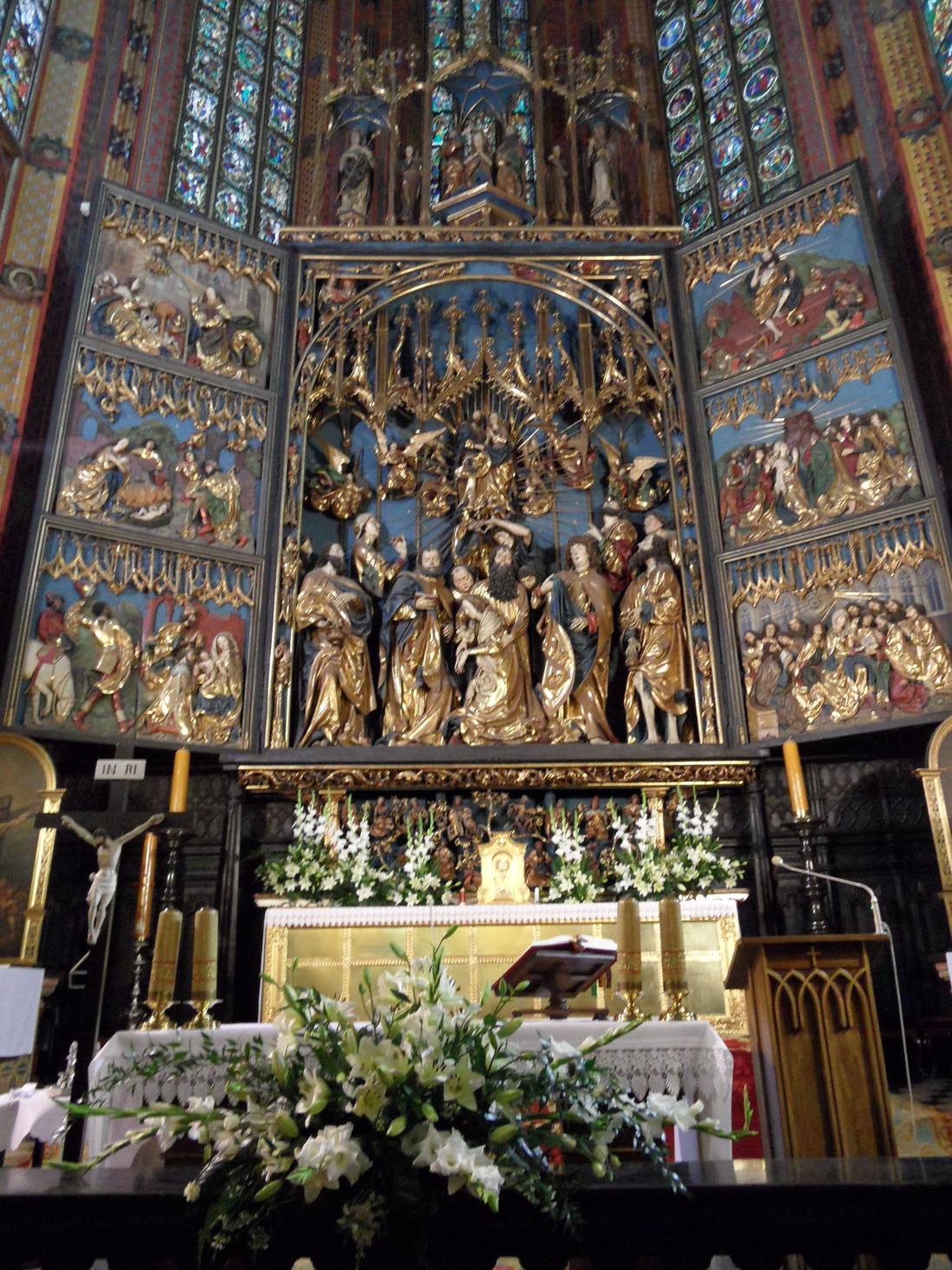
What am I going to tell you, I'd rather show you the basilica in photos.

In addition to the Great Basilica, the small church of St. Barbara caught our attention. Well, tiny... A slightly smaller church would be more accurate. The first written mention of it is from 1338.
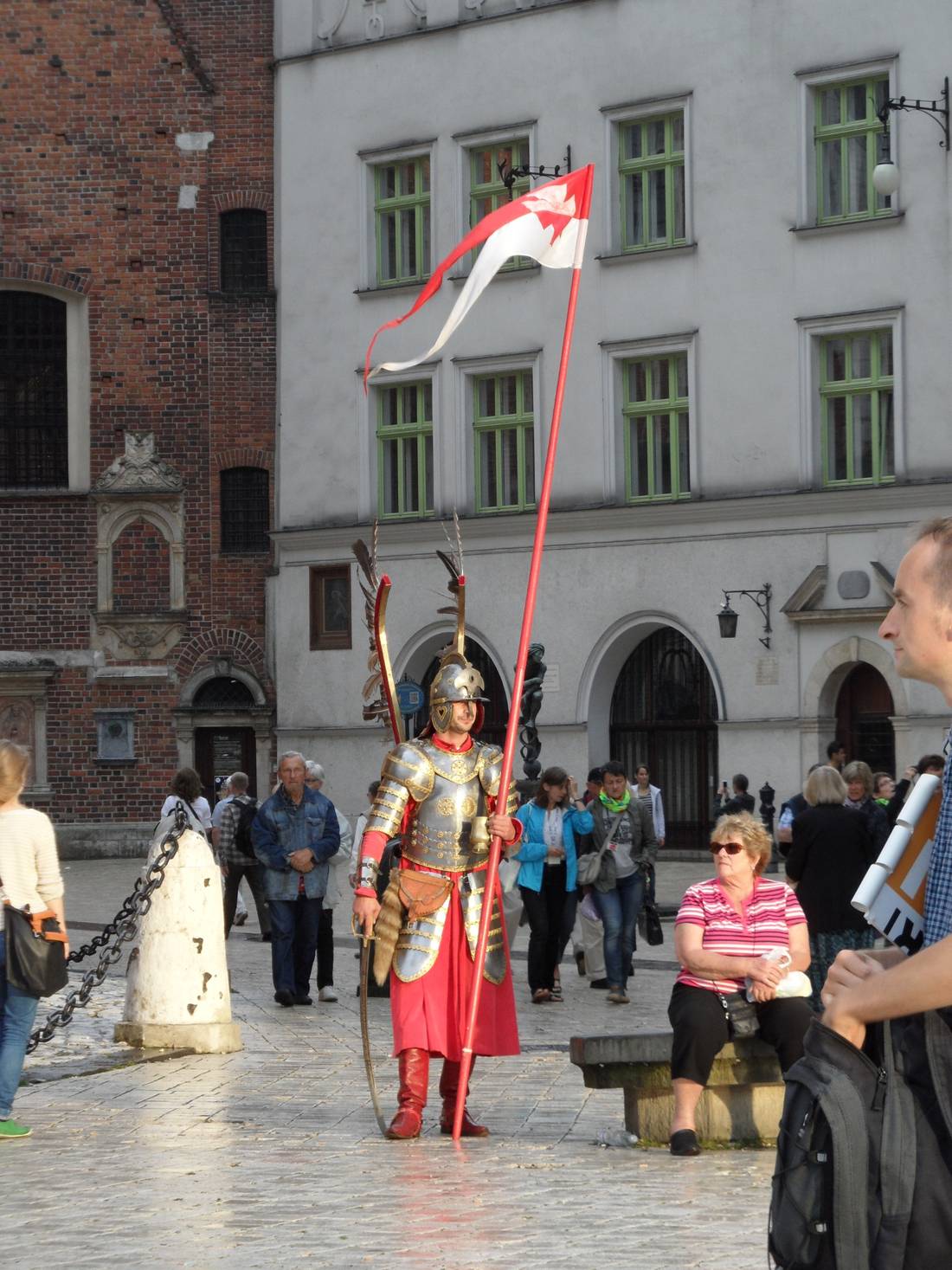
In addition to historical monuments, which are innumerable in Krakow, various attractions make their stay more pleasant for tourists. Here you can take a carriage ride like a gentleman or take a photo with a Polish hussar.
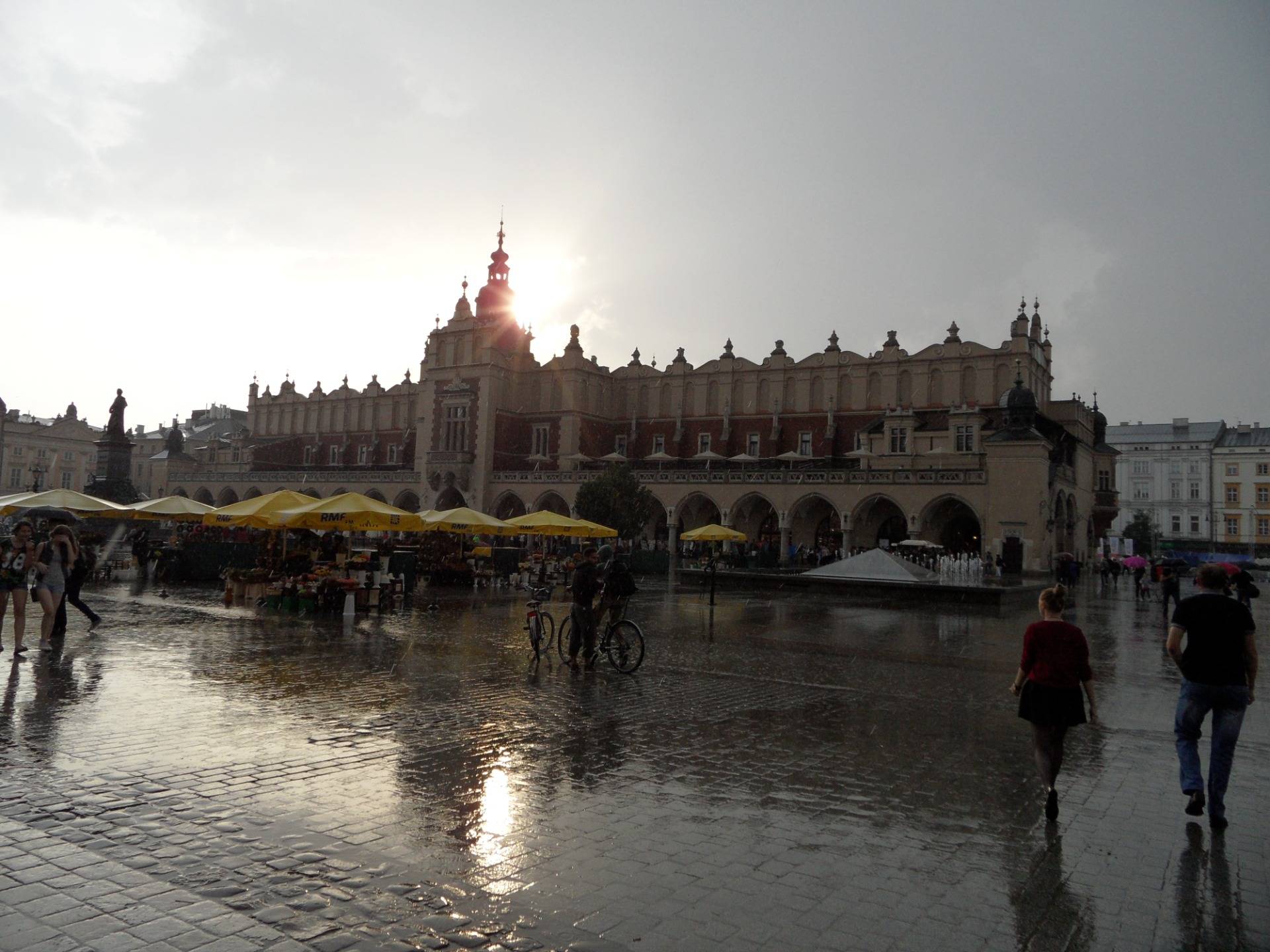
The building that you can't miss on the square is called Sukienice. It is located in the center and is quite large. The first stone building was built on this site in 1257. Later, a covered brick hall was built here, which was supposed to be used for the cloth trade. In accordance with Casimir the Great's privileges, incoming buyers could sell only their own goods and only at this place. The Gothic building burned down in the great fire of the city in 1555. The subsequent reconstruction gave it a Renaissance touch.
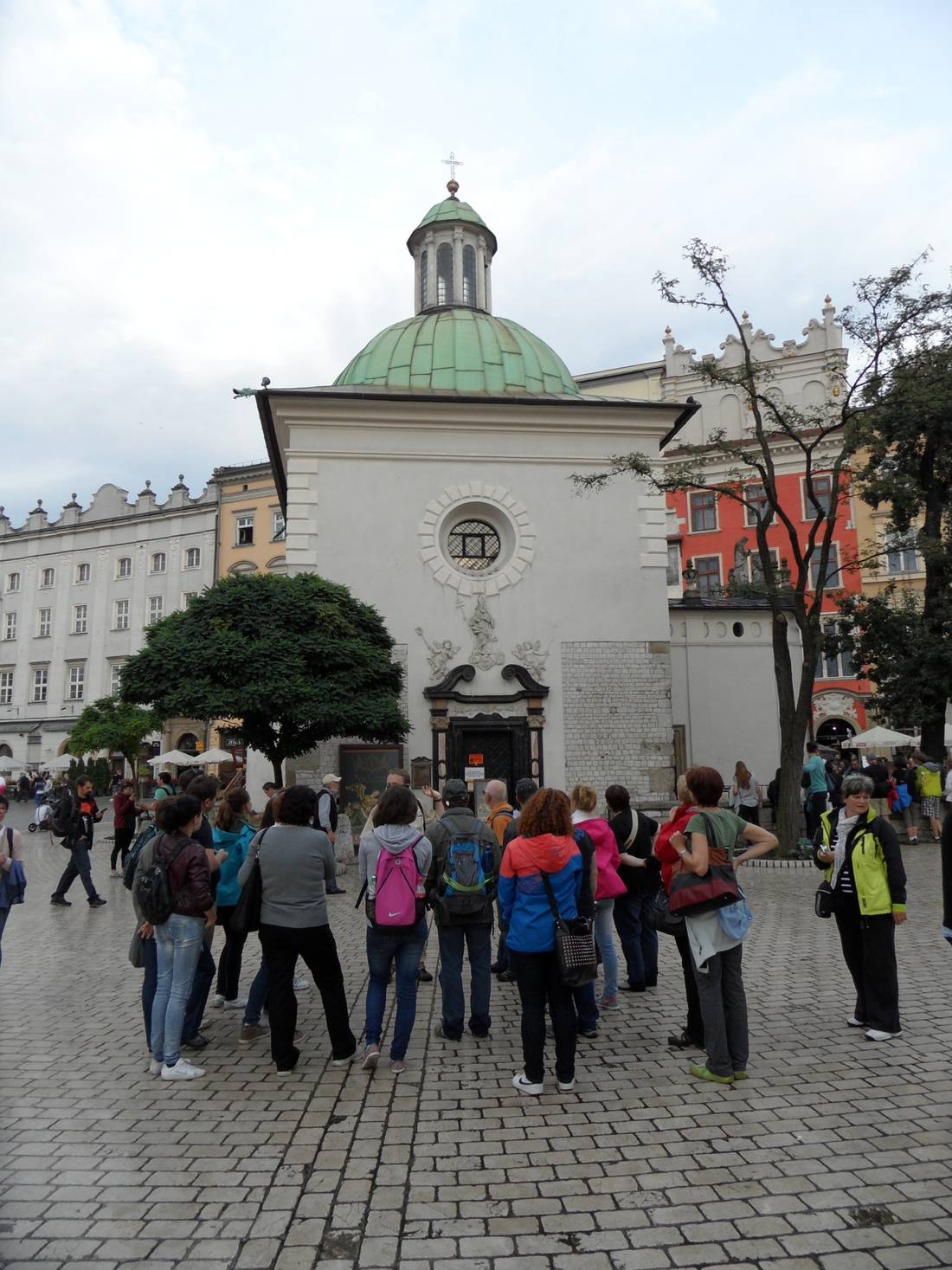
The next church to which our guide leads us is the Church of Saint Vojtech. Its foundations are probably the oldest building in the city. The first wooden church stood on this site probably around the year 1000. The first written mention comes from 1250.
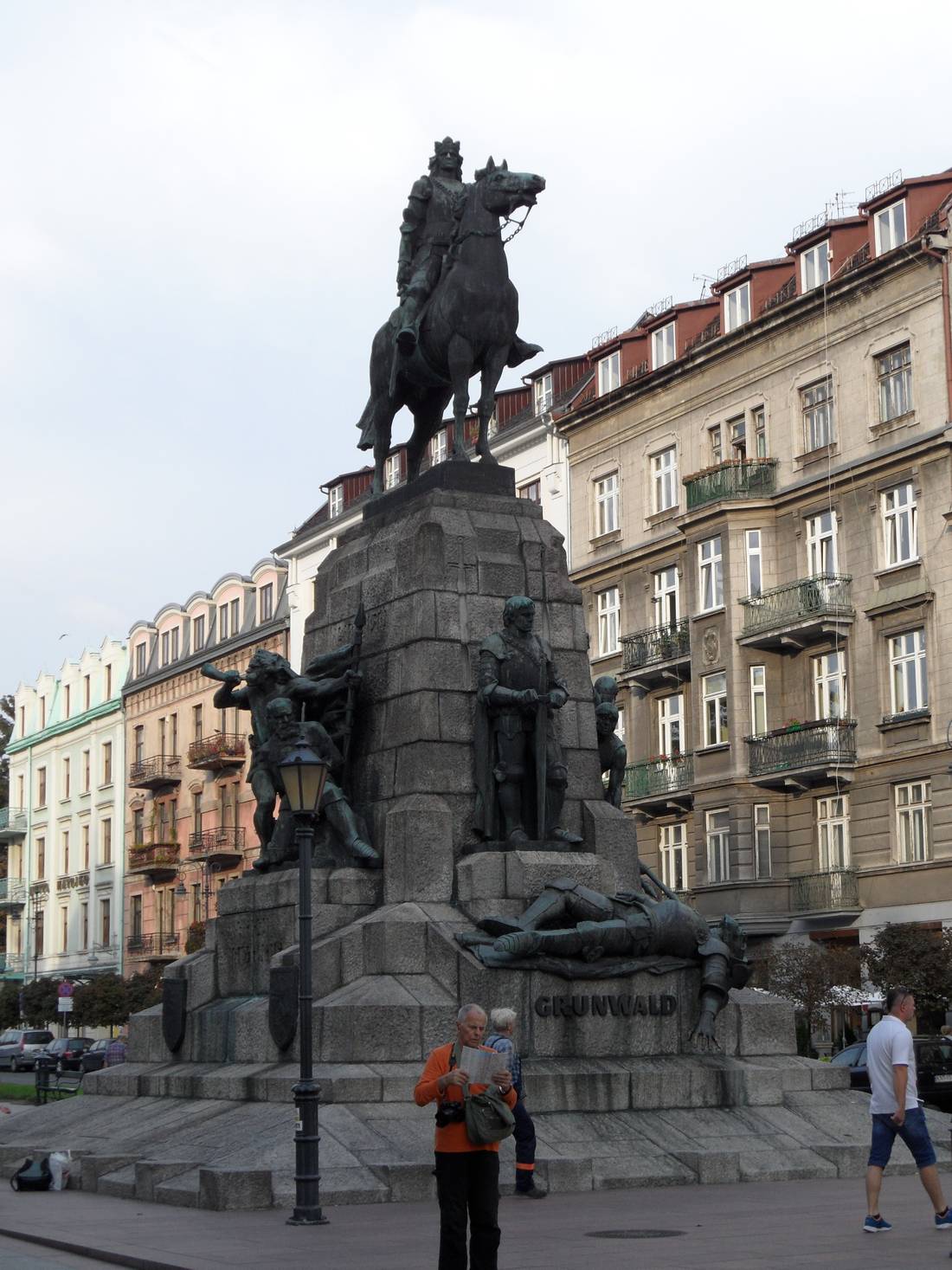
An important building on the square is the Monument to the Battle of Grunwald. Here, on June 15, 1410, the troops of the Order of Teutonic Knights met against the troops of the Polish-Lithuanian coalition. It was a decisive battle of the Polish-Lithuanian-Teutonic War (1409-1411) and one of the largest knightly battles in the history of medieval Europe. The commanders of the victorious Polish-Lithuanian coalition were the Polish king Vladislav II. Jagiellonian and Grand Duke Vytautas of Lithuania. The Order of Teutonic Knights was led by Grand Master Ulrich von Jungingen.
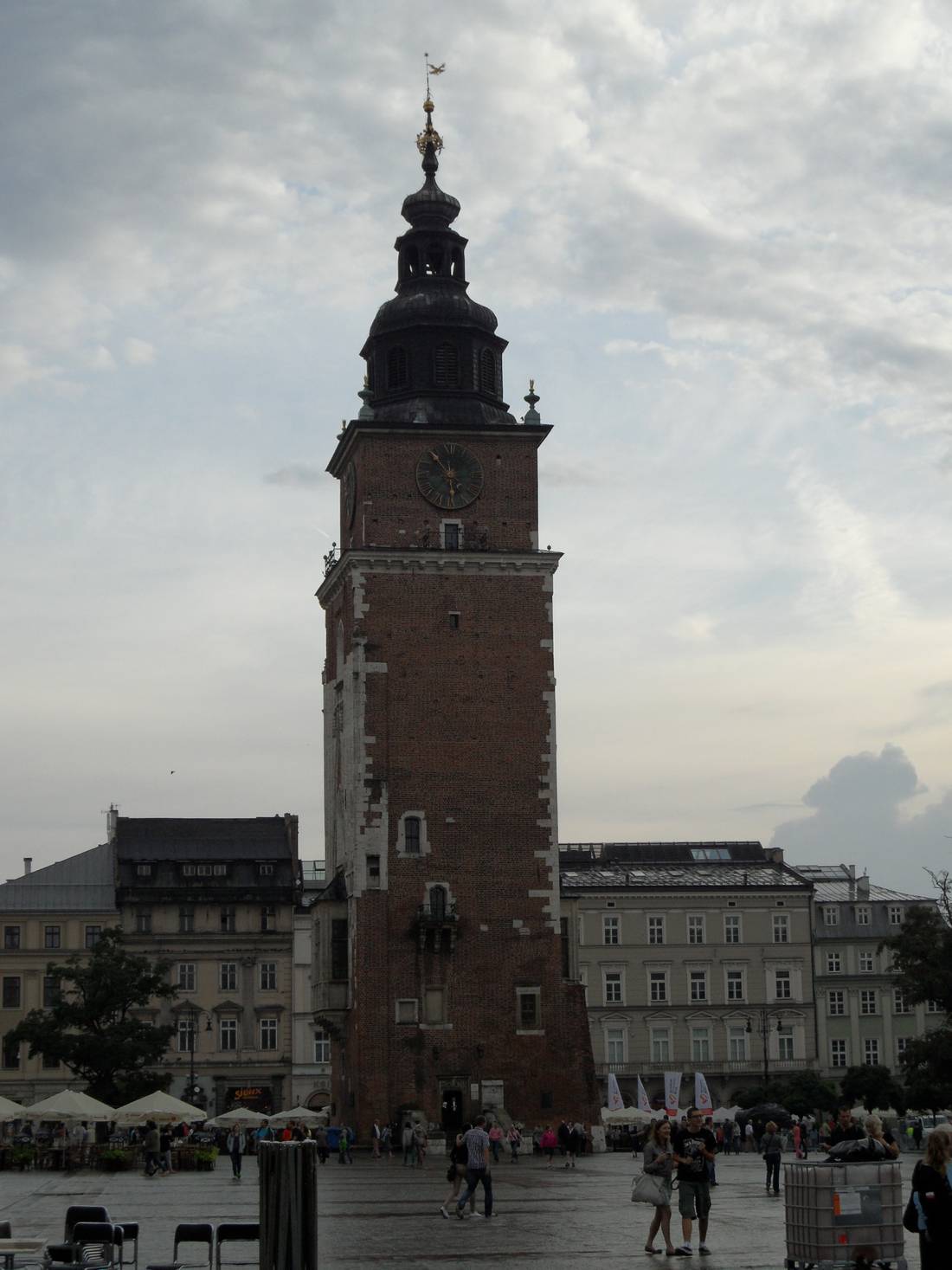
In the middle of the square stands the Town Hall tower, which reaches a height of 70 meters, somewhat alone. It is a Gothic tower from the 14th century. The town hall was part of it, but it was demolished.
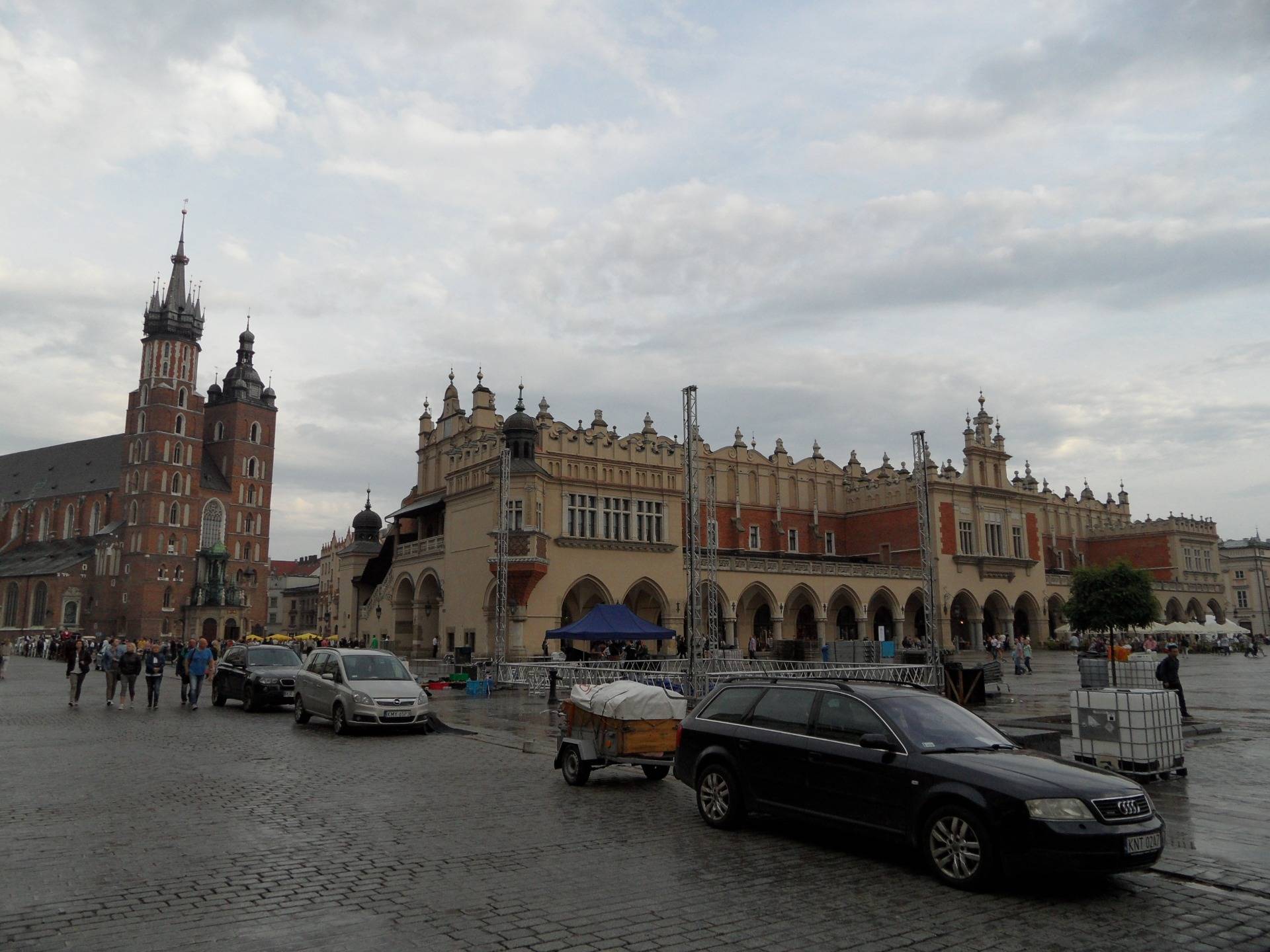
At the end of our tour, I will tell you about the square where we are. The square is called Rynek Glówny and it is the largest town square in Europe. It was created after the Tatar invasion and destruction of Krakow in 1241.
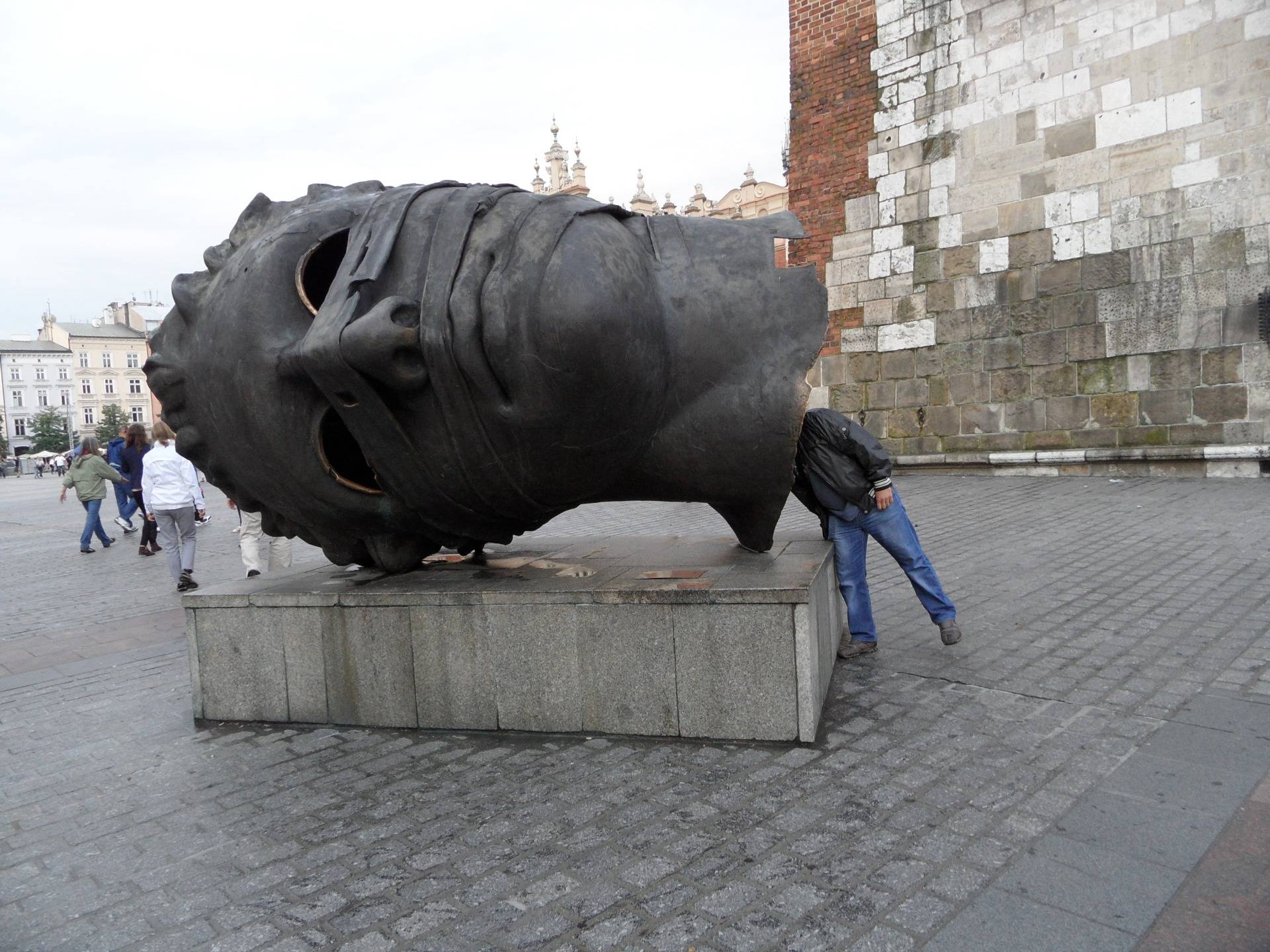
The day is coming to an end and with it our trip in this charming historical city of Poland. However, there is another day ahead of us and we are looking forward to new experiences on the next trip.
well thank you
Po Slovensky
Kráľovské mesto Krakov patrí medzi najznámejšie mestá v Poľsku. Je to druhé najväčšie mesto a zároveň centrum Malopoľského vojvodstva. Práve po Malopoľskom vojvodstve sme sa túlali a na návštevu Krakova, mesta ktoré je zapísané v UNESCO sme sa veľmi tešili.
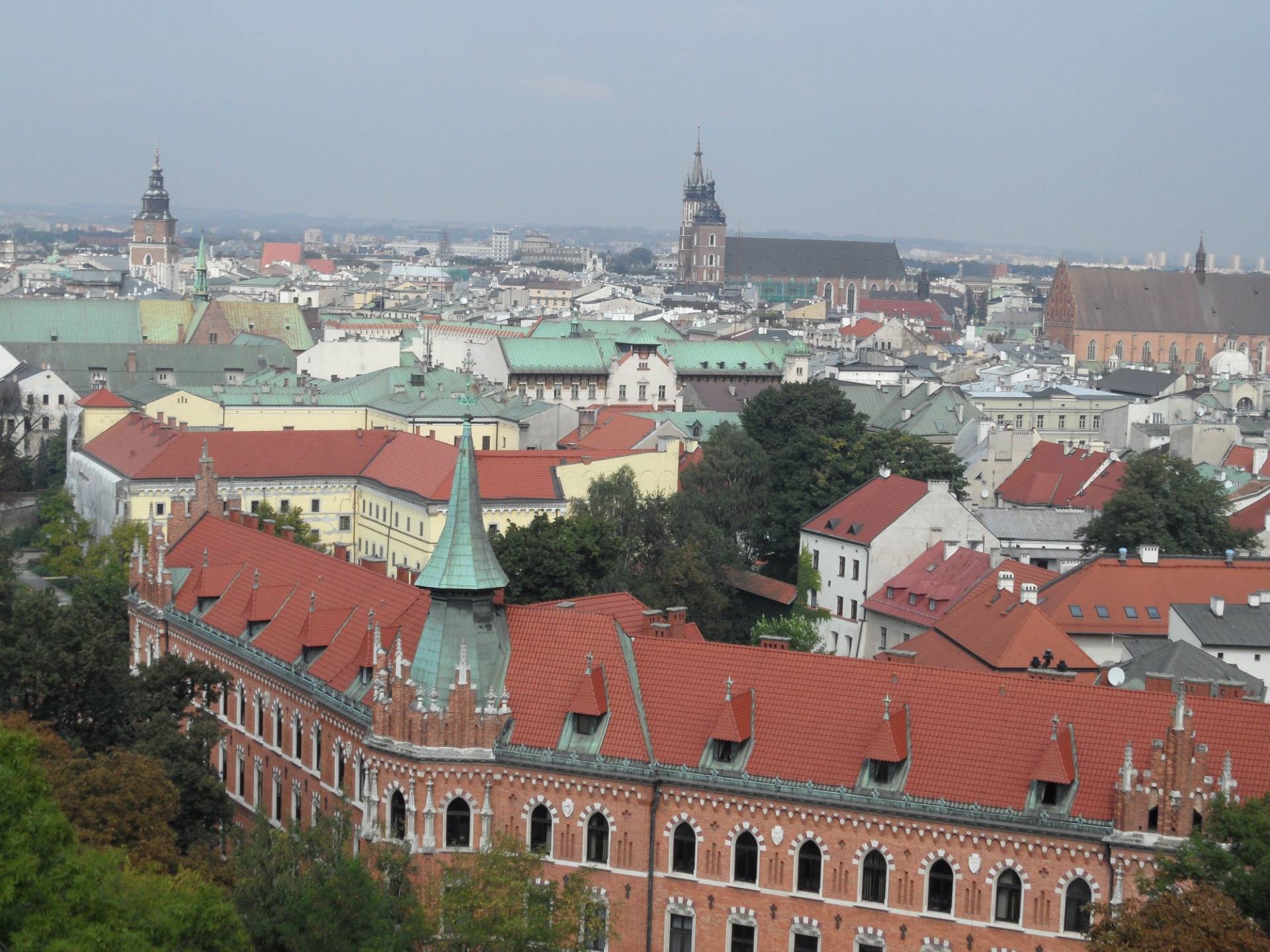
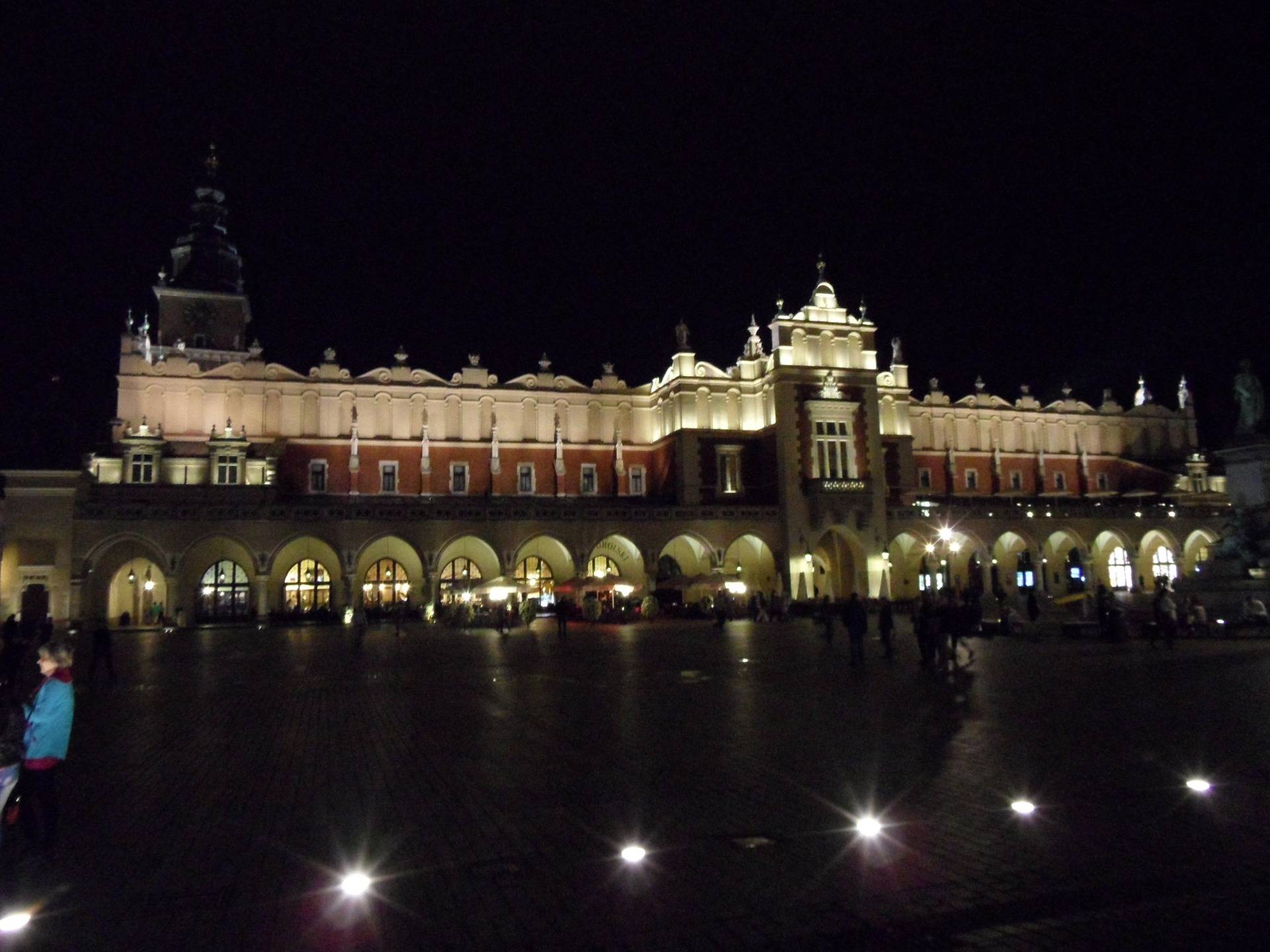
Do mesta sme prišli už večer, no boli sme unavení po celodennom chodení po pamiatkach, o ktorých som písal v predchádzajúcich článkoch a tak sme sa rozhodli ochutnať miestne špeciality v pivárni. Špecialitami myslím pivo. A ešte aj pivo. Skrátka tých pív bolo trochu viac, no o to lepšie sa nám spalo a boli sme pripravení na celodenné spoznávanie Krakova.
Vstali sme skoro ráno a autobusom sme sa odviezli k mestskej štvrti Kazimierz. V súčasnosti je Kazimierz mestskou časťou Krakova, no nebolo tomu tak vždy. Samostatným mestom bol až do 19. storočia a jeho úlohou bolo chrániť Krakov z juhu. Mimochodom mesto vzniklo v roku 1335, kedy vydal kráľ Kazimierz III. Wielki zakladaciu listinu.
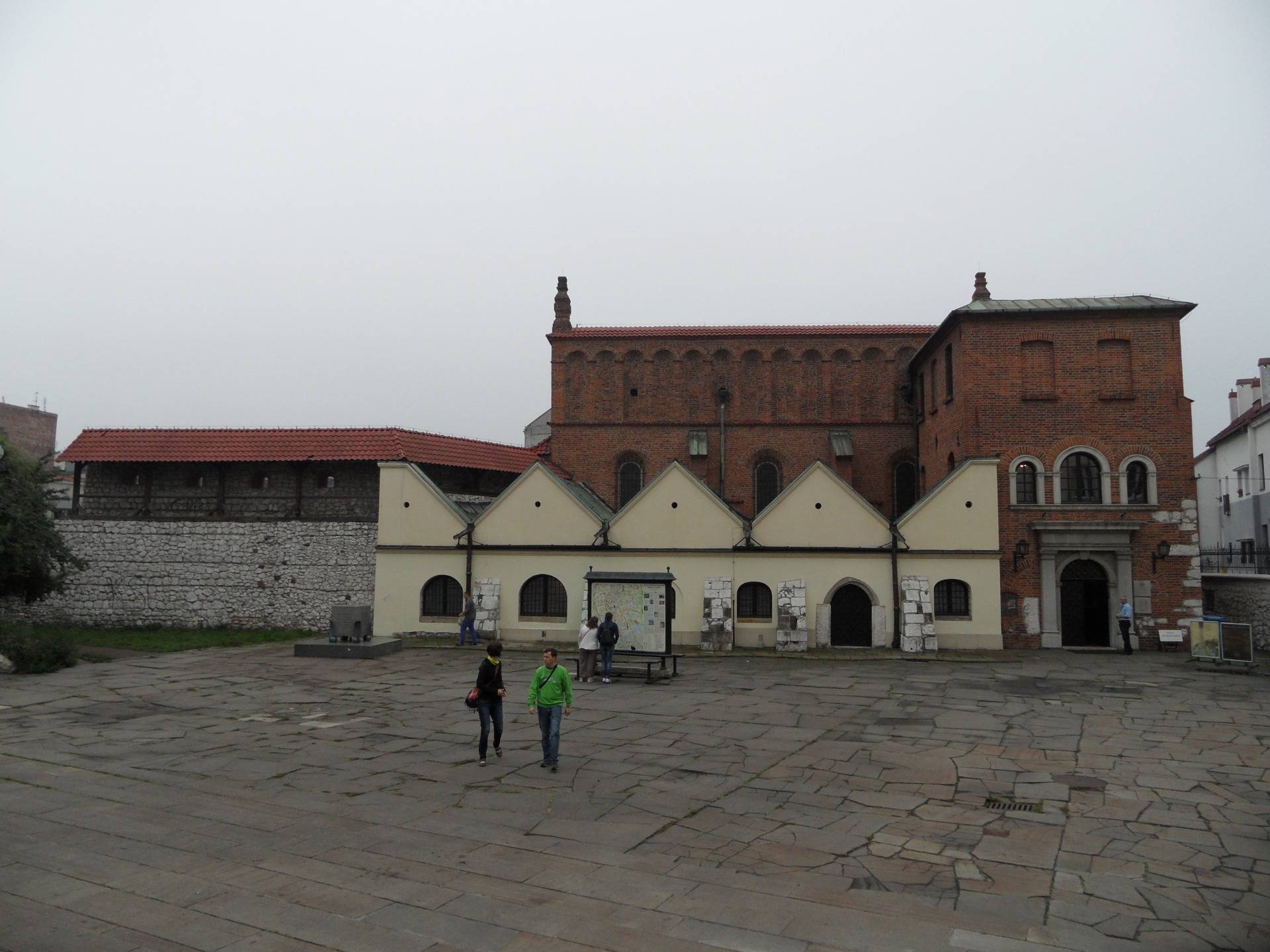
S naším autobusom sme zastali pred jednou z mnohých synagóg. Stará synagóga bola postavená v 15. storočí a je to najstaršia synagóga v Poľsku. Nebola to náhoda že sme zastavili práve pri synagóge. Mesto Kazimierz sa stalo významným centrom židovskej kultúry. Všetko sa to začalo v roku 1495 keď nechal poľský kráľ Ján I. presťahovať všetkých Krakovských židov práve sem.
Zaujímavosťou je, že práve židia sa chceli od miestneho obyvateľstva nejako oddeliť a požiadali radu mesta o povolenie vybudovať si vlastný vnútorný múr. Tá im vyhovela a došlo k oddeleniu židovskej a kresťanskej komunity v Kazimierzi. Odvtedy rozvoj oboch komunít prebiehal samostatne. Múr oddeľoval oba komunity až do roku 1822.
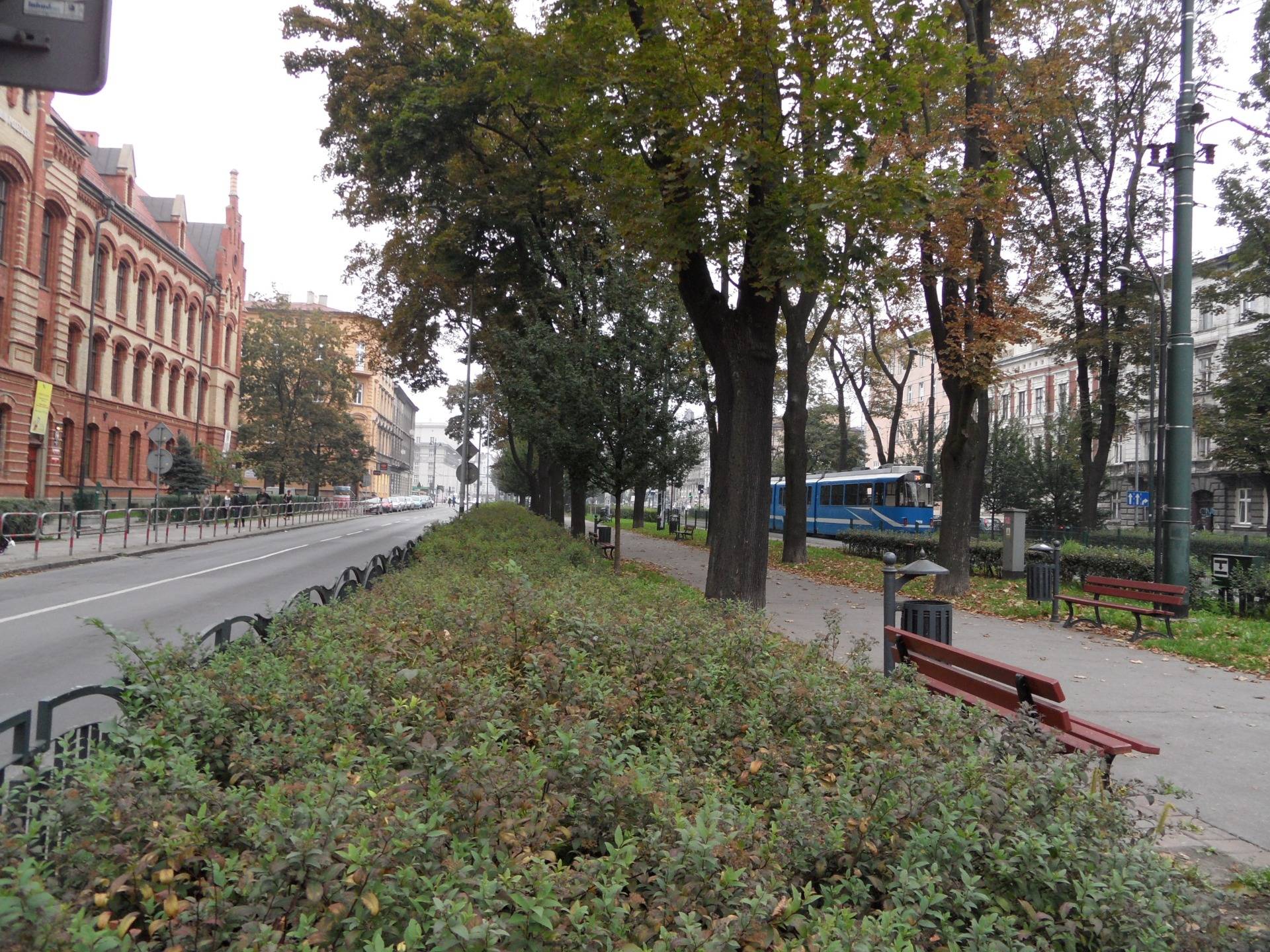
Kazimierz sa spojil so starým mestom Krakov symbolicky zasypaním a odklonením jedného z ramien Visly. Takto vznikla Stradomská ulica, ktorá spája obe mestá.

Stáročná prítomnosť židov v Kazimierzi skončila počas druhej svetovej vojny, kedy z pôvodne 58 000 krakovských židov sa konca vojny dožilo iba 3000. Na fotografii prechádzame ulicou na ktorej sa natáčal film Schindlerov zoznam.
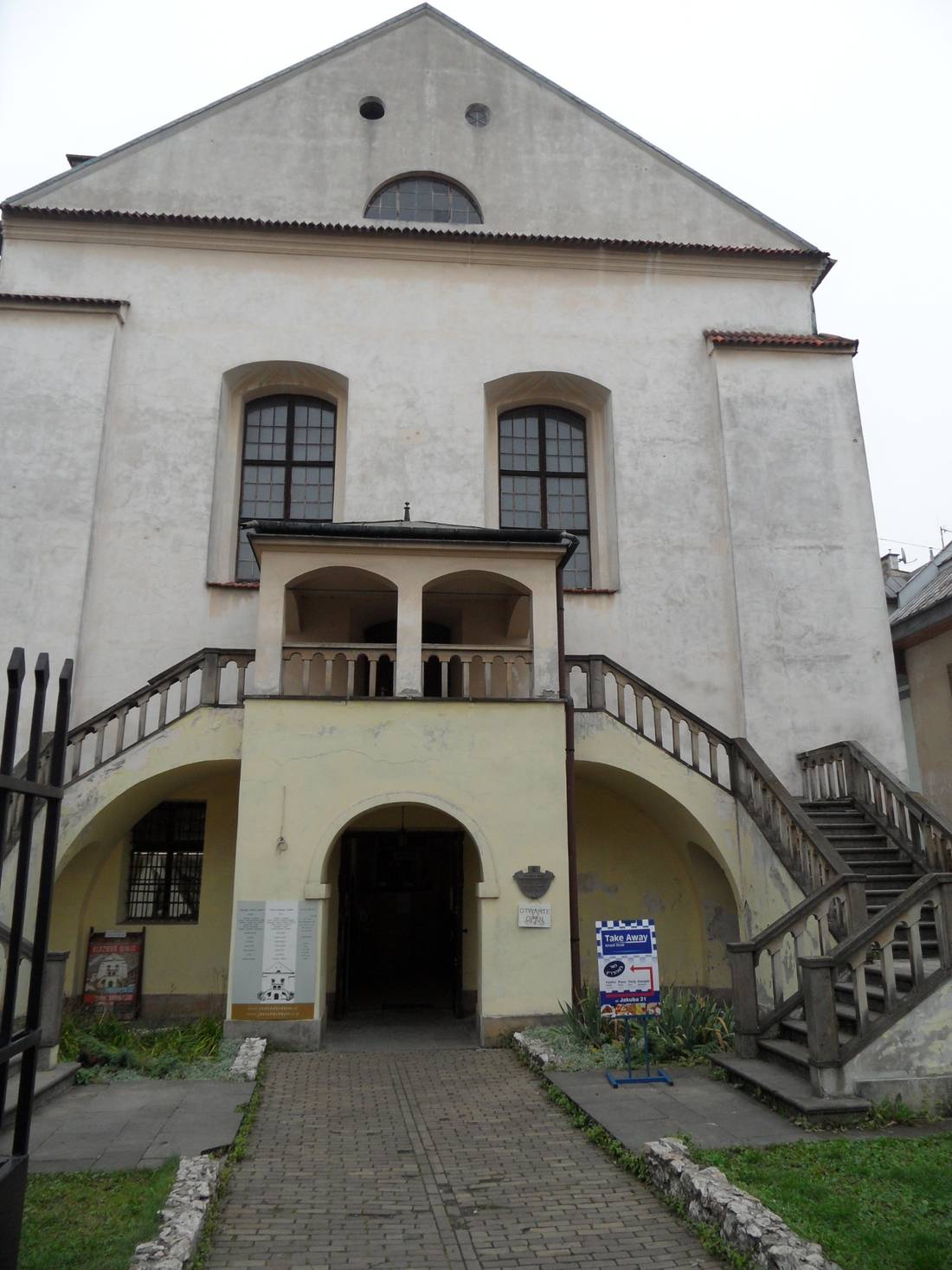
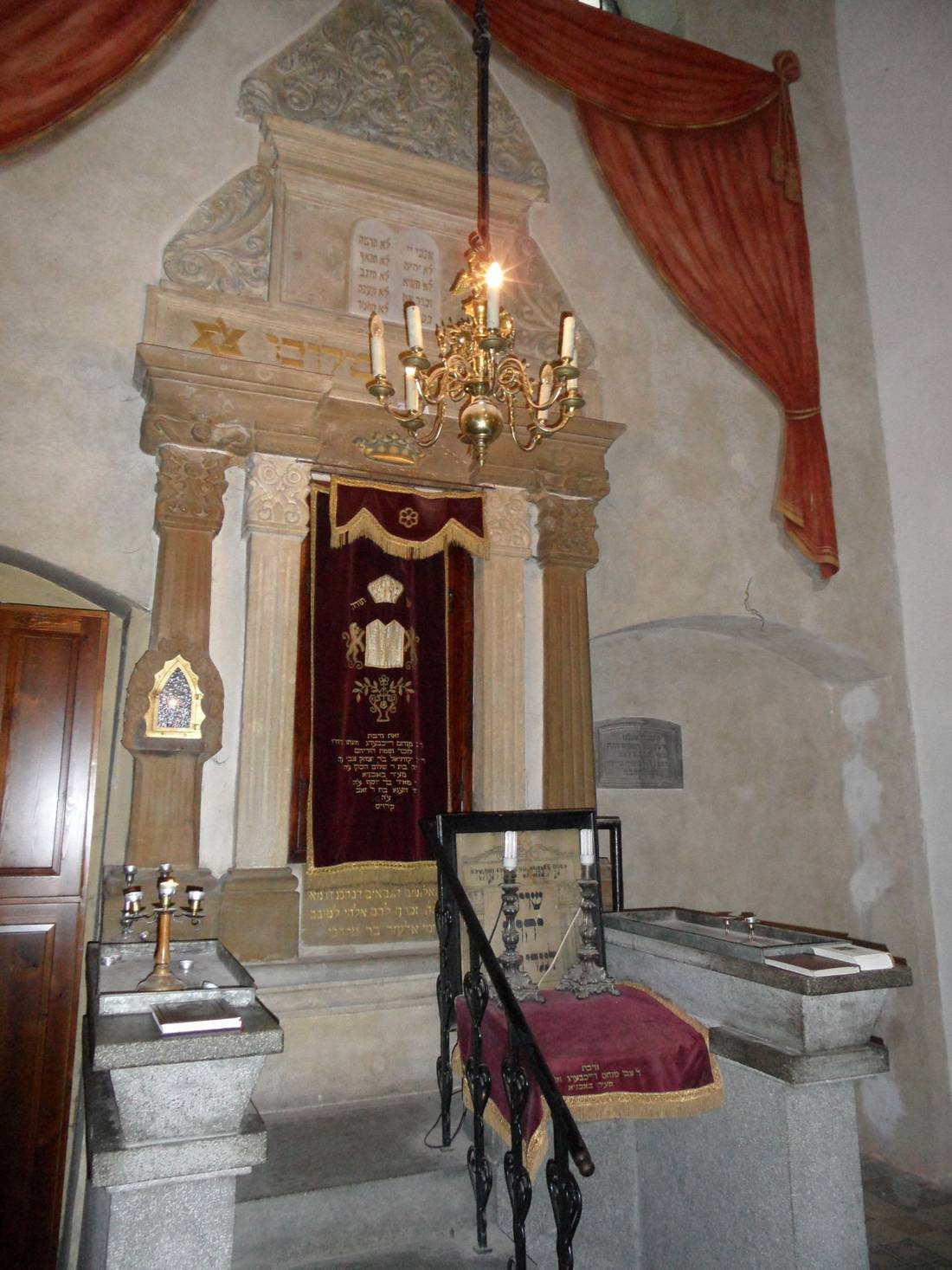
Prichádzame k ďalšej zo synagóg. Do Starej synagógy sme sa nemohli ísť pozrieť, no do Synagógy Remuh sa ideme pozrieť. Na hlavy si dávame jarmulky a vchádzame dnu. Je to neveľká synagóga, ktorá pôvodne slúžila pravdepodobne ako modlitebňa pre úzky okruh rodiny a priateľov Israela ben Josefa. Neskôr prešla viacerými prestavbami a v súčasnosti sa v nej konajú bohoslužby. Vybudovaná bola v roku 1558.
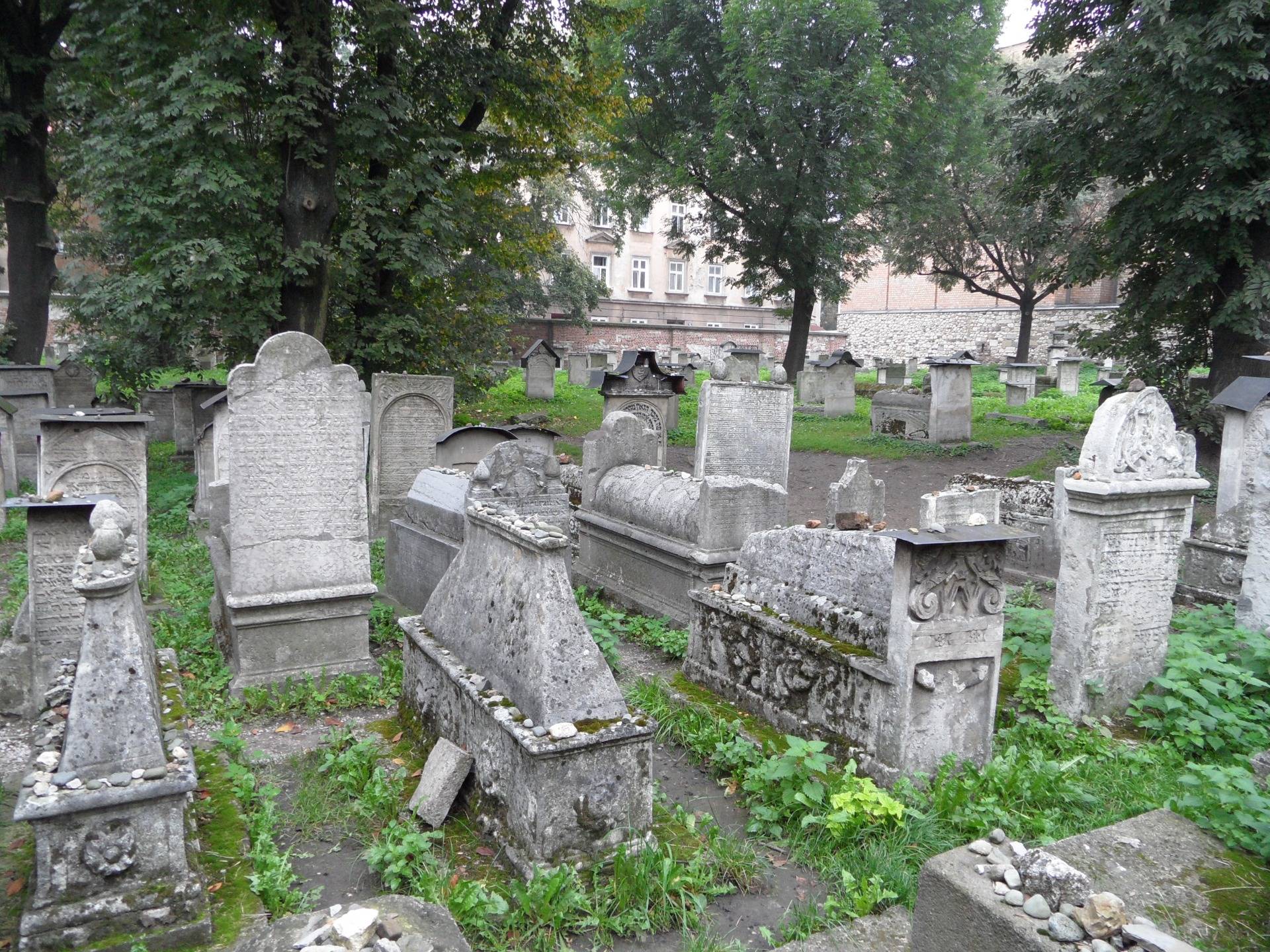
V prehliadke pokračujeme ďalej. Súčasťou synagógy je aj cintorín, ktorý takisto nesie názov Remuh. Bol založený v roku 1533 a využívali ho až do roku 1800. Cintorín je pútnické miesto zbožných židov kvôli náhrobku Rabína Mošeho Isserlesa, ktorý bol považovaný za jedného z najväčších učencov svojej doby. Je autorom mnohých významných právnických diel židovského práva a filozofie.
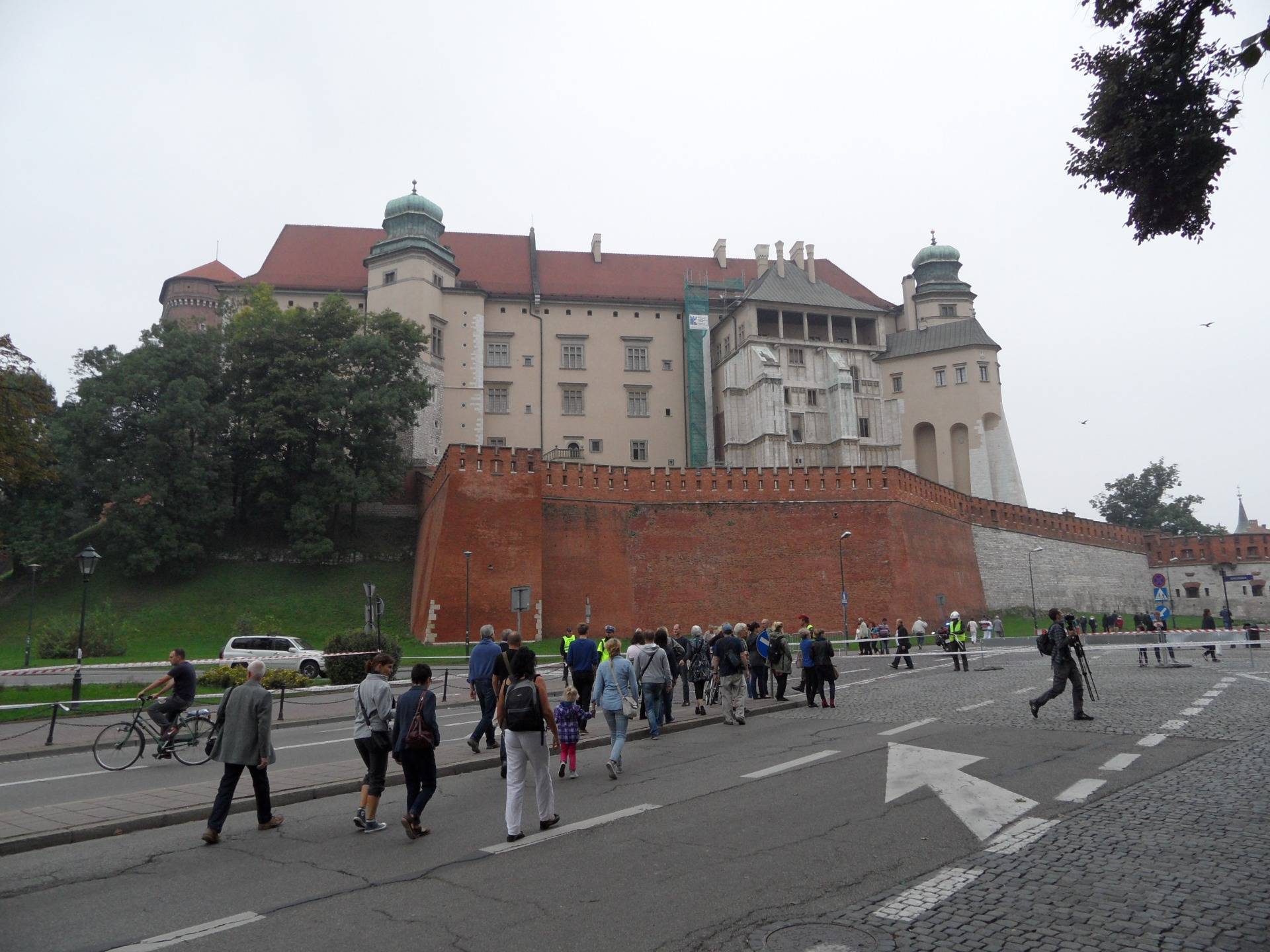
Vraciame sa späť k autobusu, no nesedíme v ňom dlho. Po chvíli prichádzame k azda najznámejšej pamiatke v meste k hradu Wawel. Hrad Wawel vznikol v 10 storočí, aj keď samotné mesto je o niečo staršie. Už od začiatku to bolo významné miesto a centrum moci v Poľsku. Kazimír III. Veľký nechal na Waweli vystavať gotický hrad , ktorý sa stál základom súčasného hradu. Najväčší rozmach však zažil za panovania Jagelloncov, ktorí sídlo v rokoch 1507-1536 dôkladne prestavali.
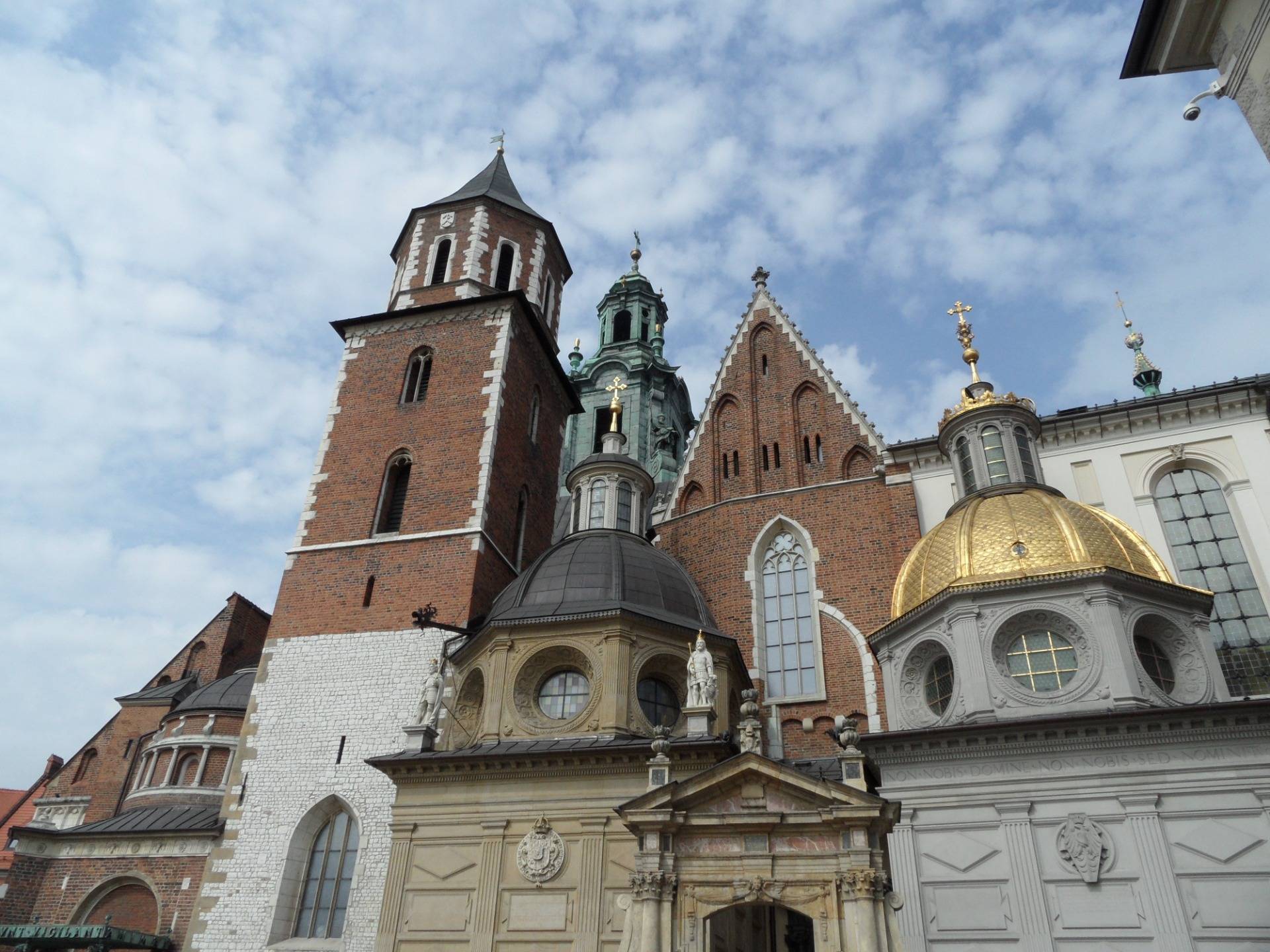
V rovnakom čase na hradnom kopci vybudovali kostol odkiaľ sa šírilo kresťanstvo do širokého okolia. Katedrála bazilika svätého Stanislava a svätého Václava sa stala azda najdôležitejším miestom na hrade Wawel. Vchádzame do tohto historického miesta, no v chráme je zakázané fotiť tak nám neostáva nič iné ako kochať sa výzdobou a v pamäti si uchovať túto nádheru. Mráz mi behá po chrbte keď si predstavím že na tomto mieste prebiehali korunovácie poľských kráľov. Po schodoch ktorými sme my vyšli hore, oni schádzali už ako panovníci mocnej krajiny.
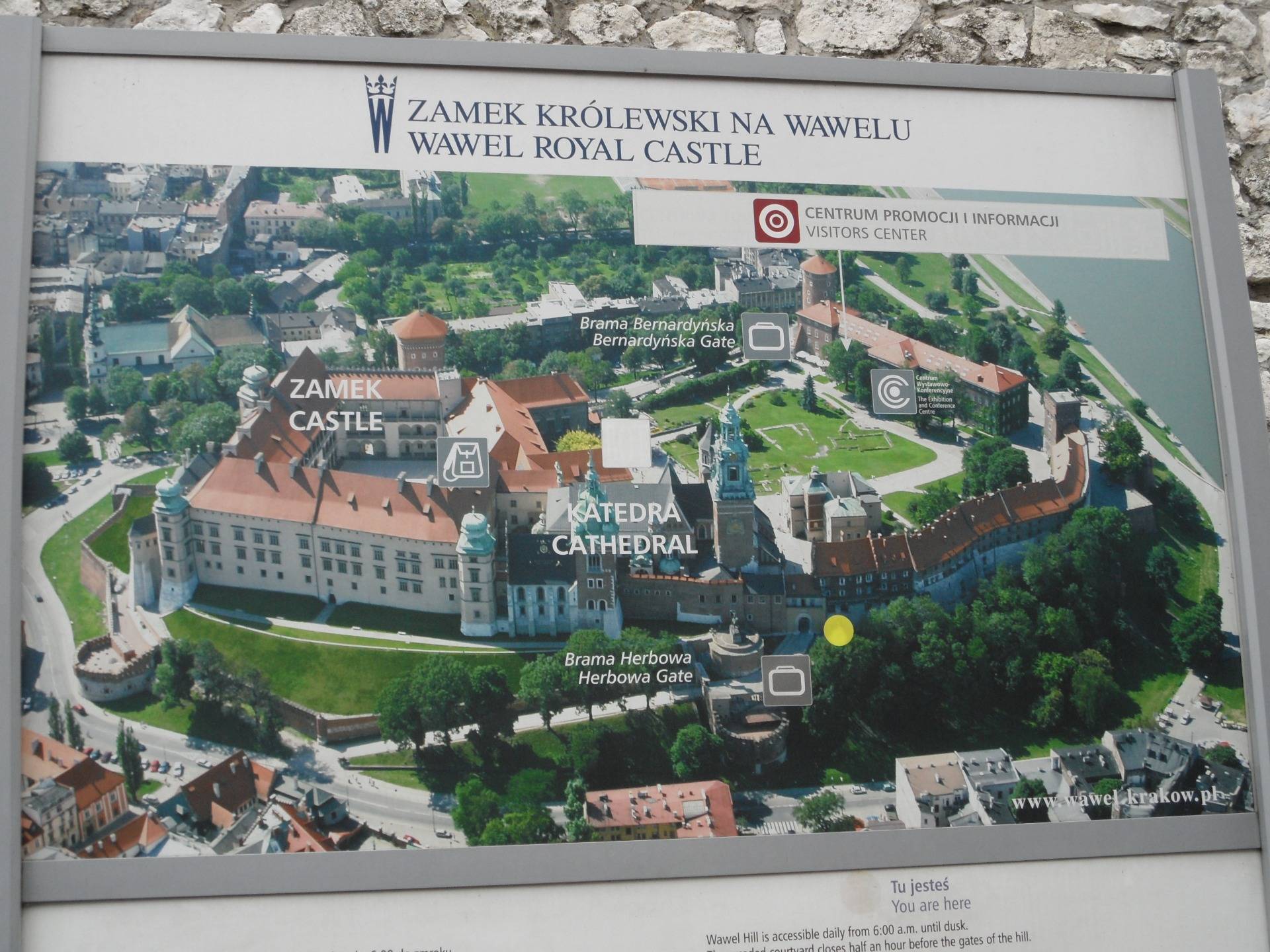
Zmena na hrade nastala v roku 1609, kedy sa panovník rozhodol presťahovať svoje hlavné sídlo do Varšavy. Predsa len Krakov bolo mesto v blízkosti hraníc a Varšava sa nachádza približne v strede Poľska. Hrad Wawel týmto rozhodnutím začal upadať.
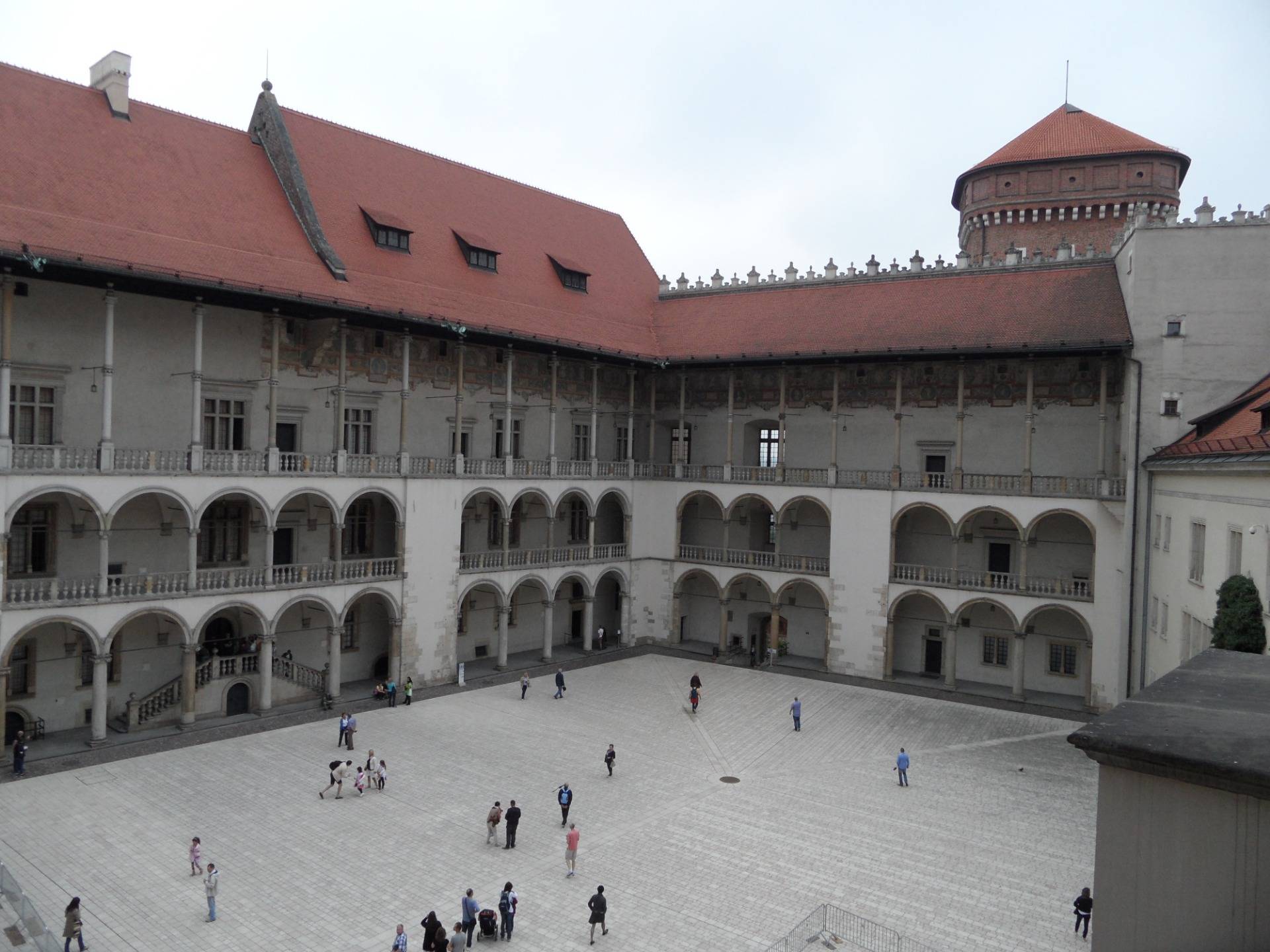
Behom švédskeho nájazdu v rokoch 1655-1657 bol hrad takmer úplne vylúpený. Hrad chátral avšak Katedrála na Wawely si naďalej zachovávala svoj význam najdôležitejšieho chrámu v Poľsku. Naďalej v nej prebiehali korunovácie panovníkov a taktiež sa tu pochovávali členovia kráľovského rodu.
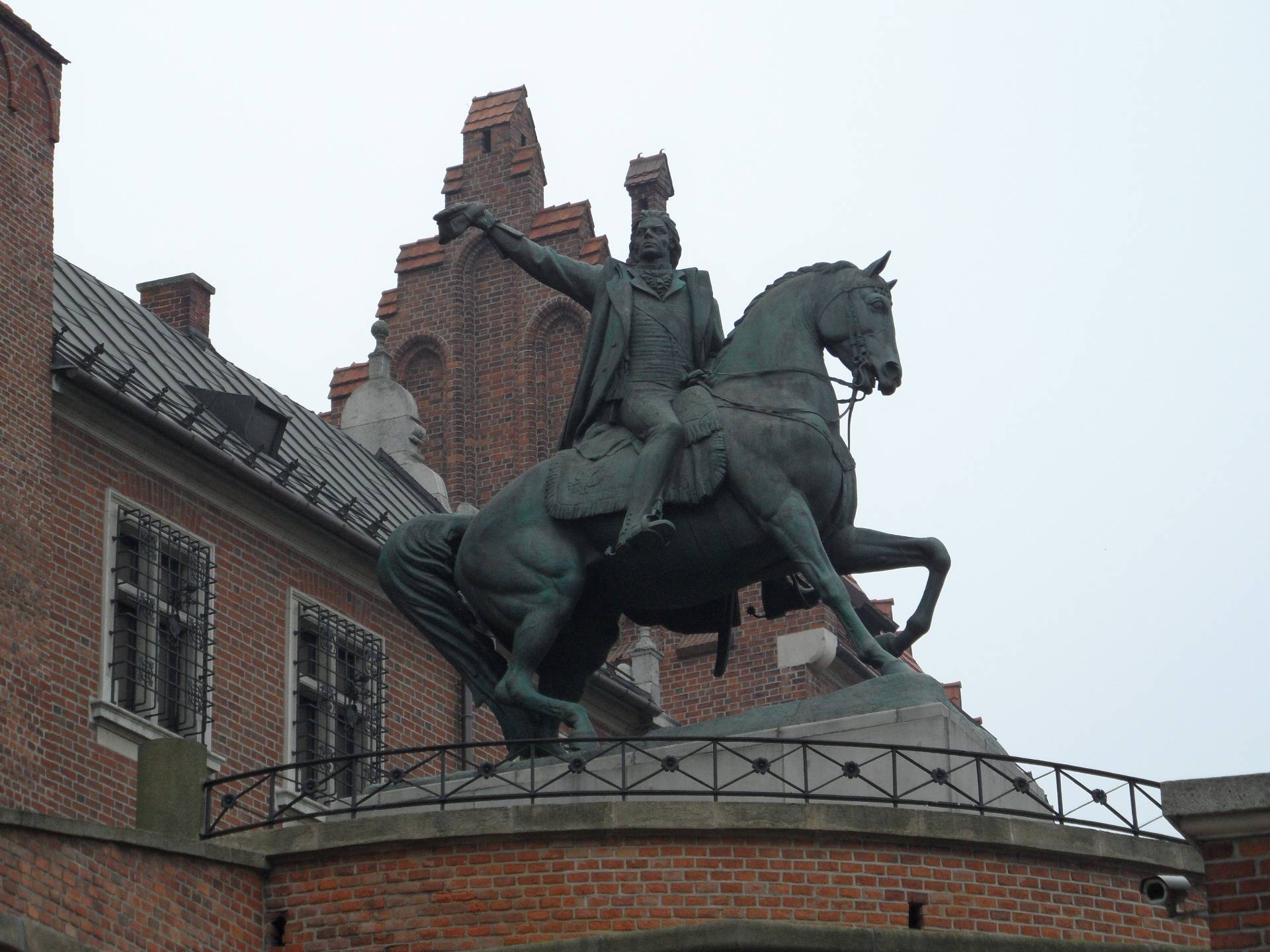
Po zániku Poľska v roku 1795 Krakov pripadol Rakúsku. Z hradu sa stali kasárne a zničených bolo veľa historických a umeleckých častí komplexu. V roku 1905 František Jozef I. vojenskú posádku zrušil a hrad sa stal historickou pamiatkou. V medzivojnovom období bol hrad sídlom poľského prezidenta. Behom nacistickej okupácie riadil odtiaľ Hans Frank tzv. Generálny gouvernement.

Na záver prehliadky hradu stúpame po schodoch. Trochu prepotení prichádzame k veľkému zvonu. Toto je zvon Zigmund. Bol zliaty v roku 1520 a je to najznámejší zvon v Poľsku ktorý bol používaný len pri najvýznamnejších príležitostiach.
Hrad sme videli, no je na čase ísť si niečo zajesť a oddýchnuť si po náročných prehliadkach. Schádzame dole z hradného kopca a prichádzame k asi hlavnému vstupu do mesta. Minimálne turisti tadiaľto chodievajú.
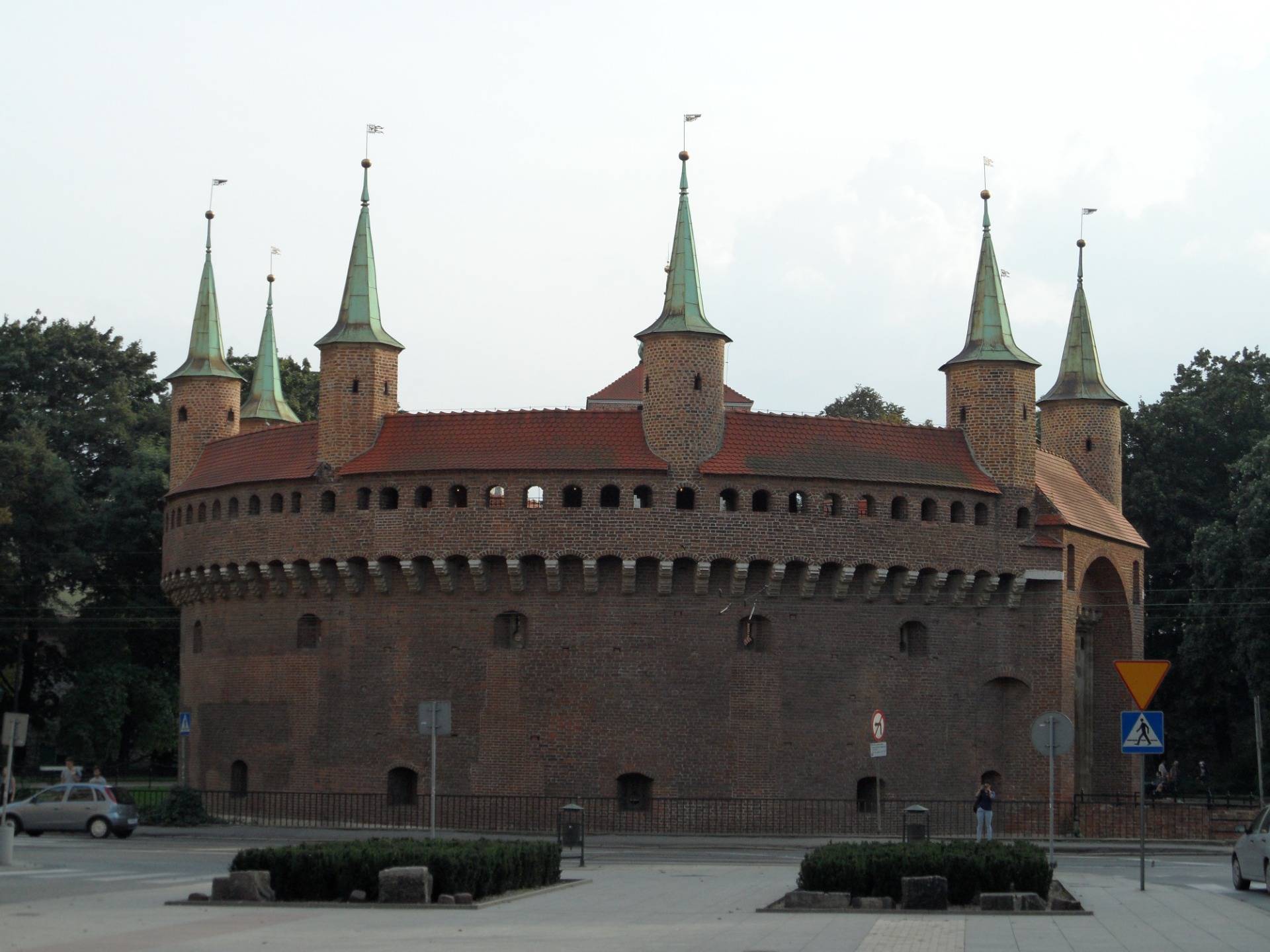
Fotíme si Barbakán, ktorý slúžil na obranu mesta. Vybudovali ho v 15 storočí.
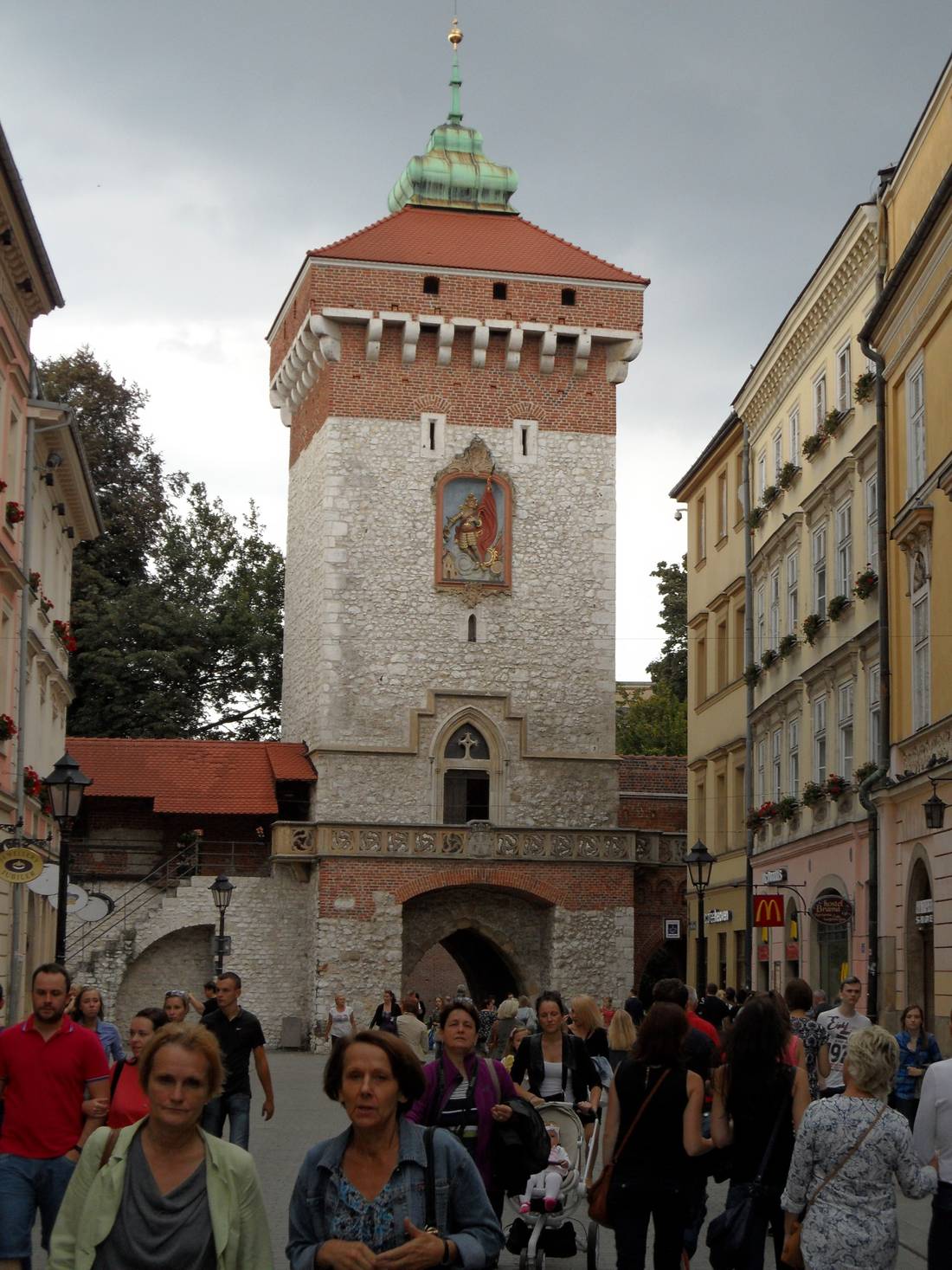
Prechádzame popod Floriánsku bránu a môžeme si povedať, že sa nachádzame v starom meste Krakov.
Teraz si opäť dáme niečo z histórie. Mesto vzniklo okolo roku 800 ako obranný hrad Vislanov. Okolo roku 999 sa stalo súčasťou Poľska a od roku 1038 je Krakov sídelné mesto Poľska do roku 1569 a od 1569 do 1596 Poľsko-Litovskej únie. Mesto prekvitalo v 14-16 storočí, kedy bolo členom hanzy a od roku 1320 sa stalo korunovačným mestom Poľska s prvou poľskou univerzitou, Jagellonskou univerzitou založenou v roku 1364. Krakov bol známy výrobou súkna. Od roku 1795 patrilo mesto Rakúsku, len v rokoch 1809-1815 bolo súčasťou Varšavského kniežatstva a v rokoch 1815-1846 bolo hlavným mestom Krakovskej republiky. Po potlačení krakovského povstania bolo opäť pričlenené k Rakúsko-Uhorsku. Od roku 1918 je mesto opäť súčasťou Poľska.
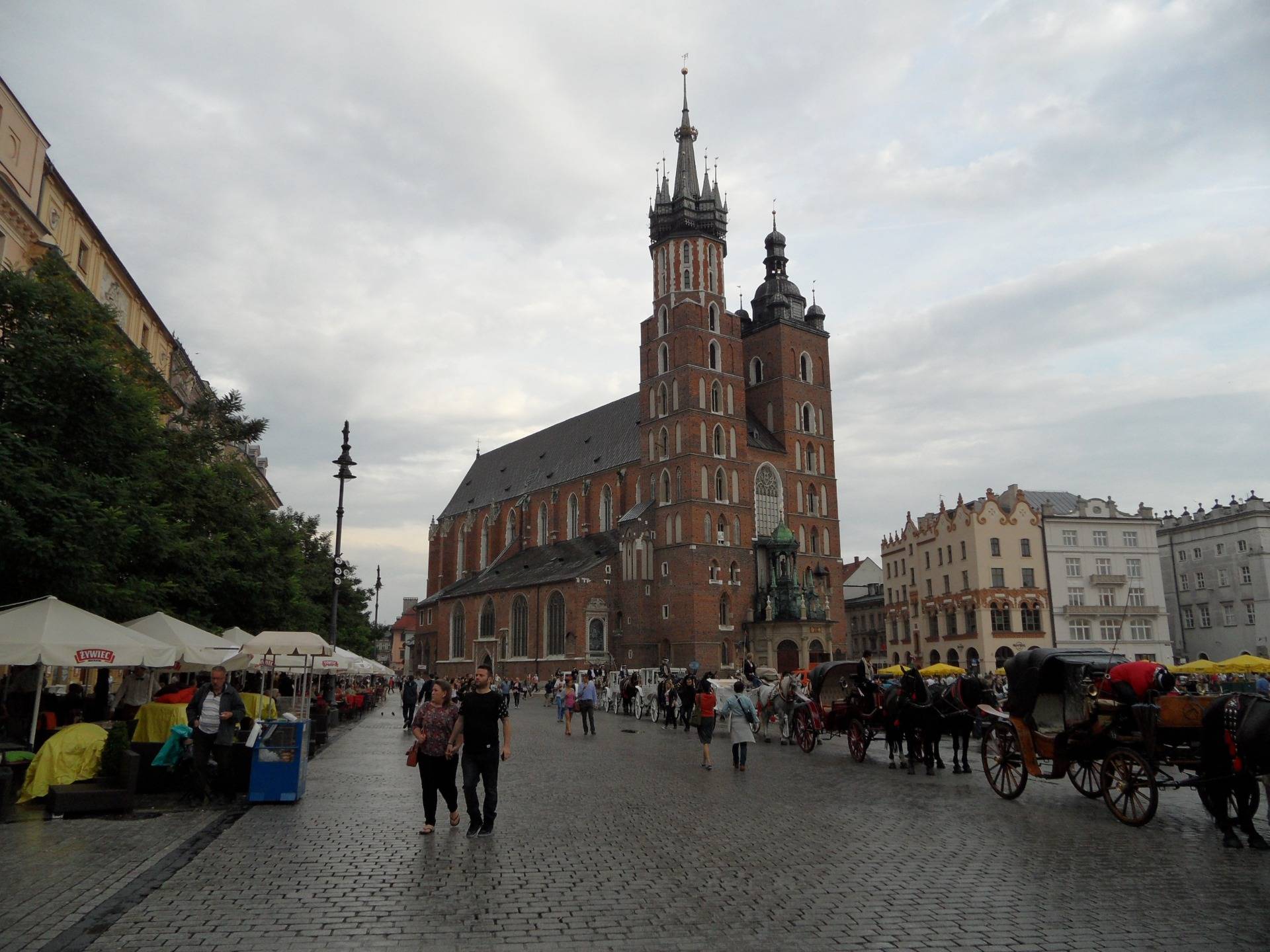
Dominantou starého mesta je Bazilika Nanebovzatia najsvätejšej Panny Márie (Bazylika Mariacka), ktorá pochádza z 13 storočia. Do jej útrob sme sa spolu s naším sprievodcom vybrali pozrieť.
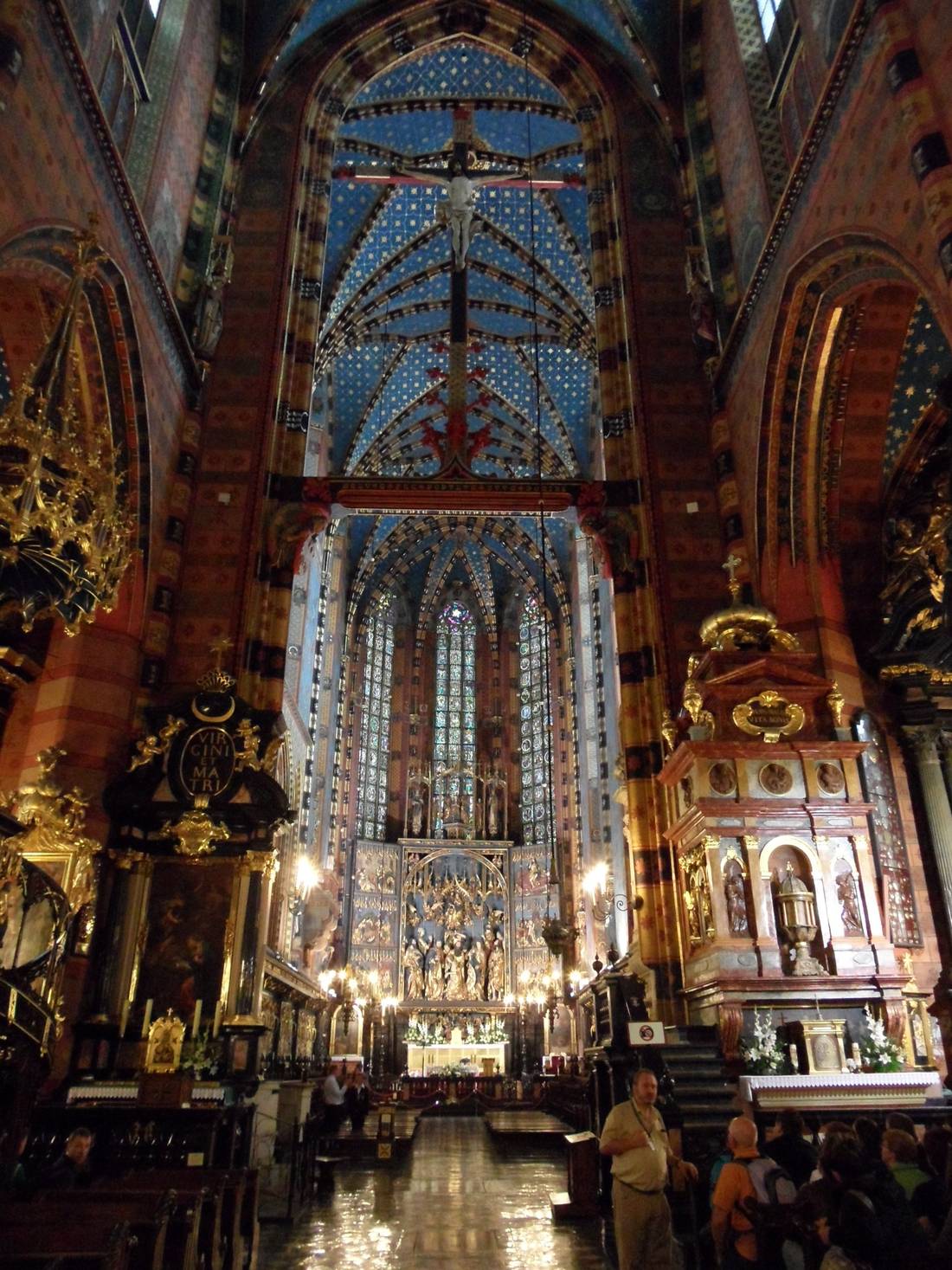
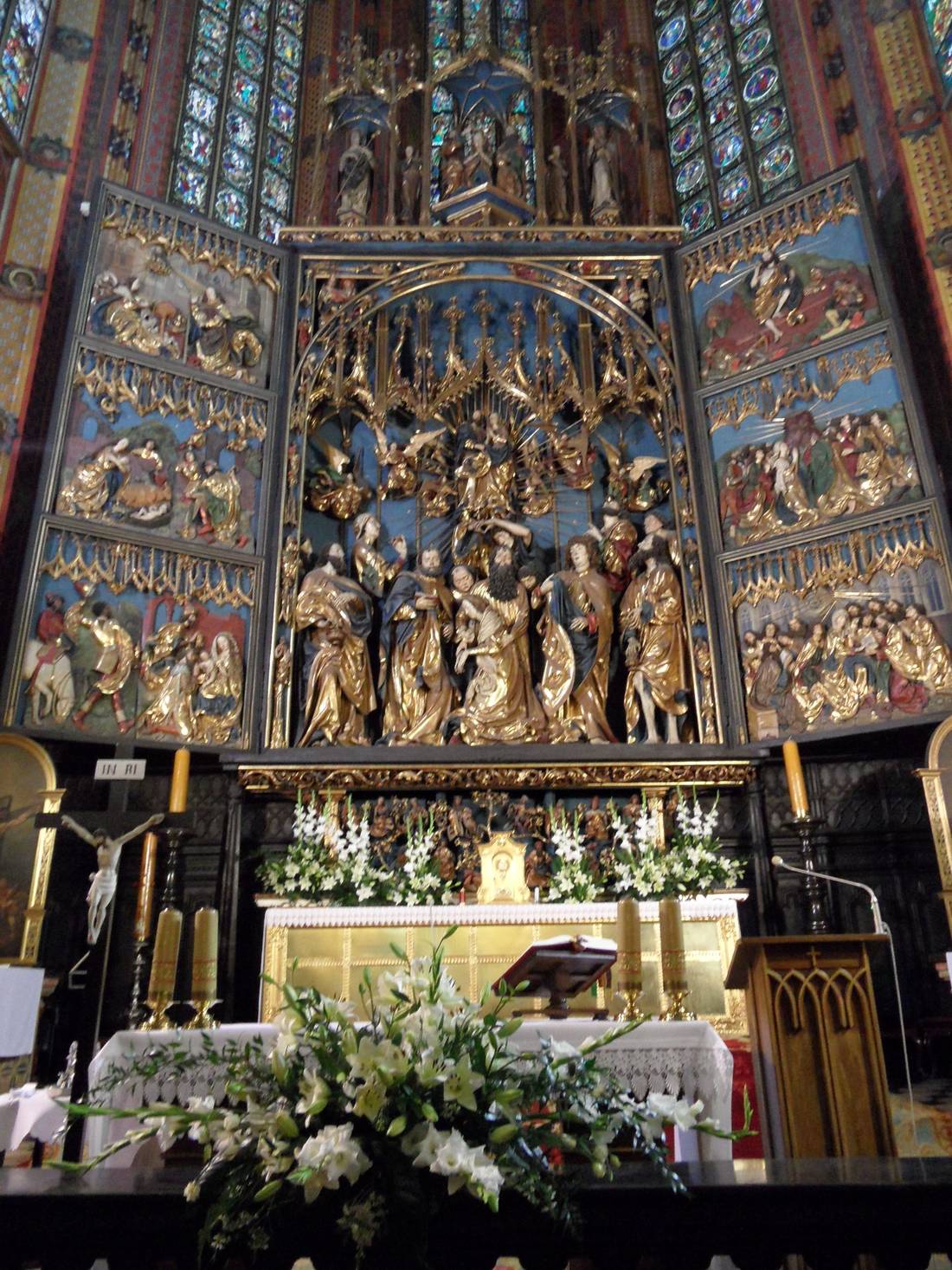
Čo vám budem hovoriť, radšej vám baziliku ukážem na fotkách.
Ready to Blog & Earn?
With TravelFeed, easily start your own travel blog and earn as you go. It's the smart platform for travelers who want to profit from their passion. Create a free account
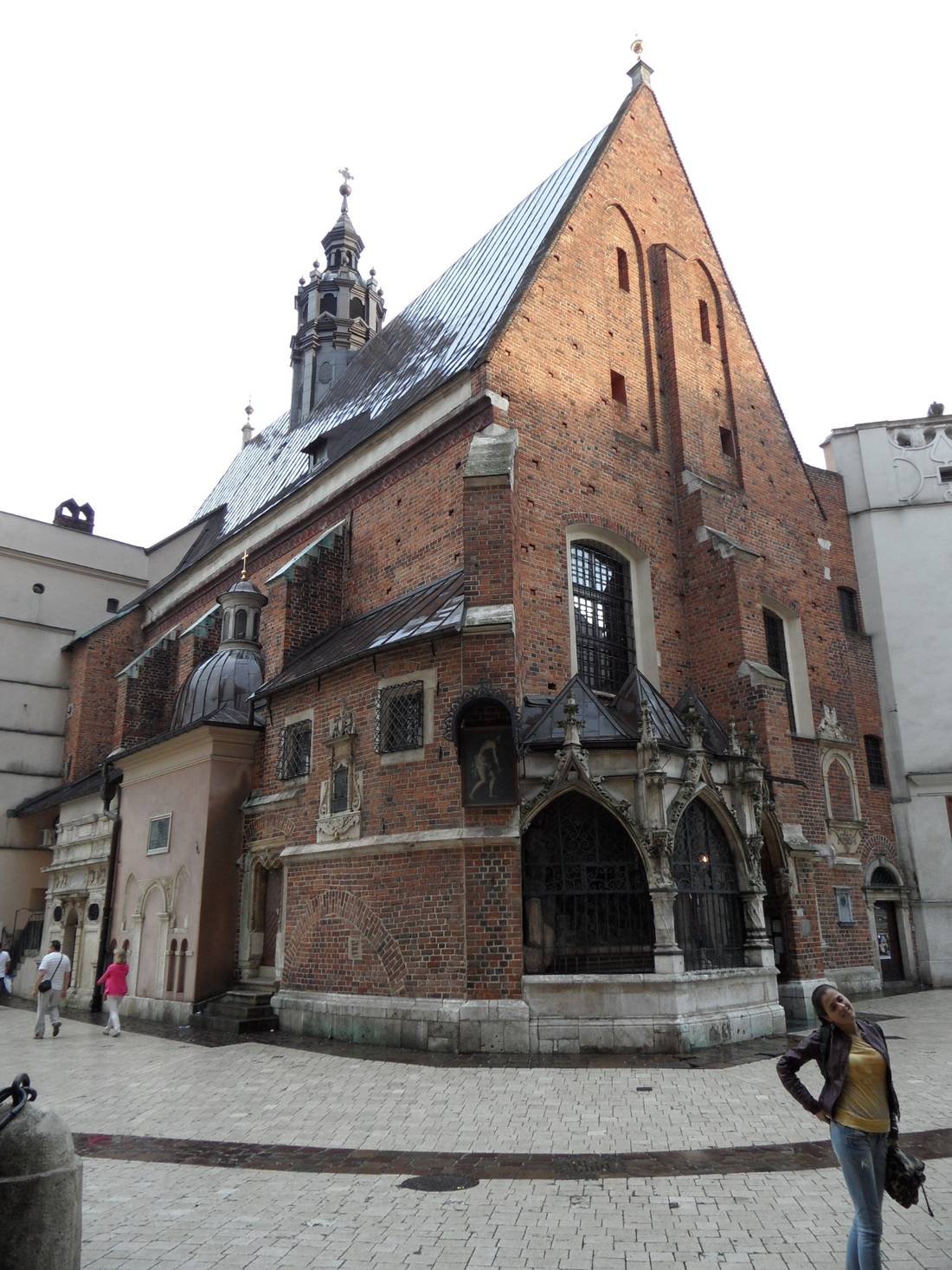
Okrem Veľkej Baziliky nás zaujal maličký kostol svätej Barbory. No maličký.... O niečo menší kostol by bolo presnejšie. Prvá písomná zmienka o ňom je z roku 1338.
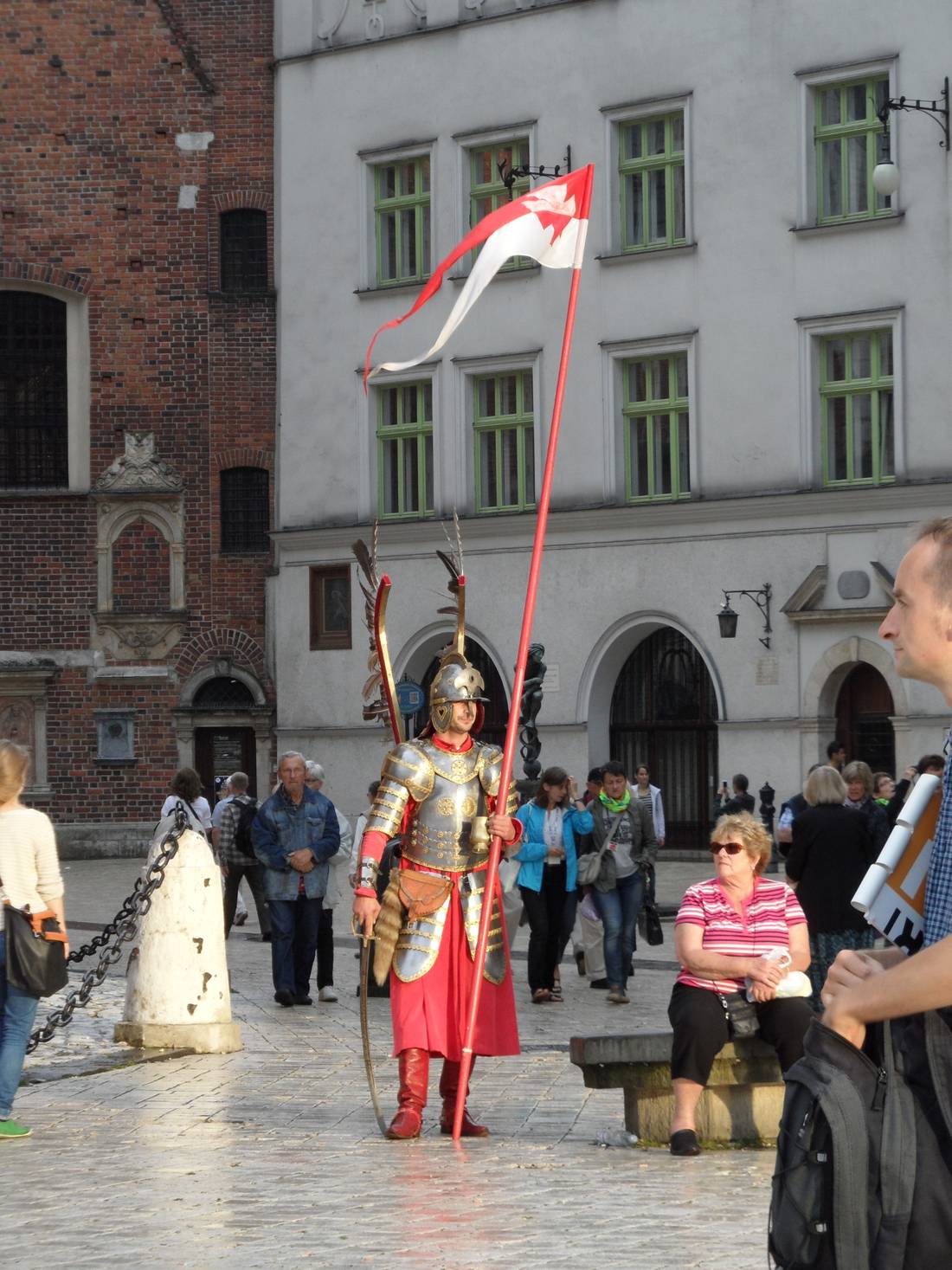
Okrem historických pamiatok, ktorých je v Krakove neúrekom, spríjemňujú turistom ich pobyt rôzne atrakcie. Môžete sa tu previesť na koči ako urodzení páni, či sa vyfotografovať s poľským husárom.
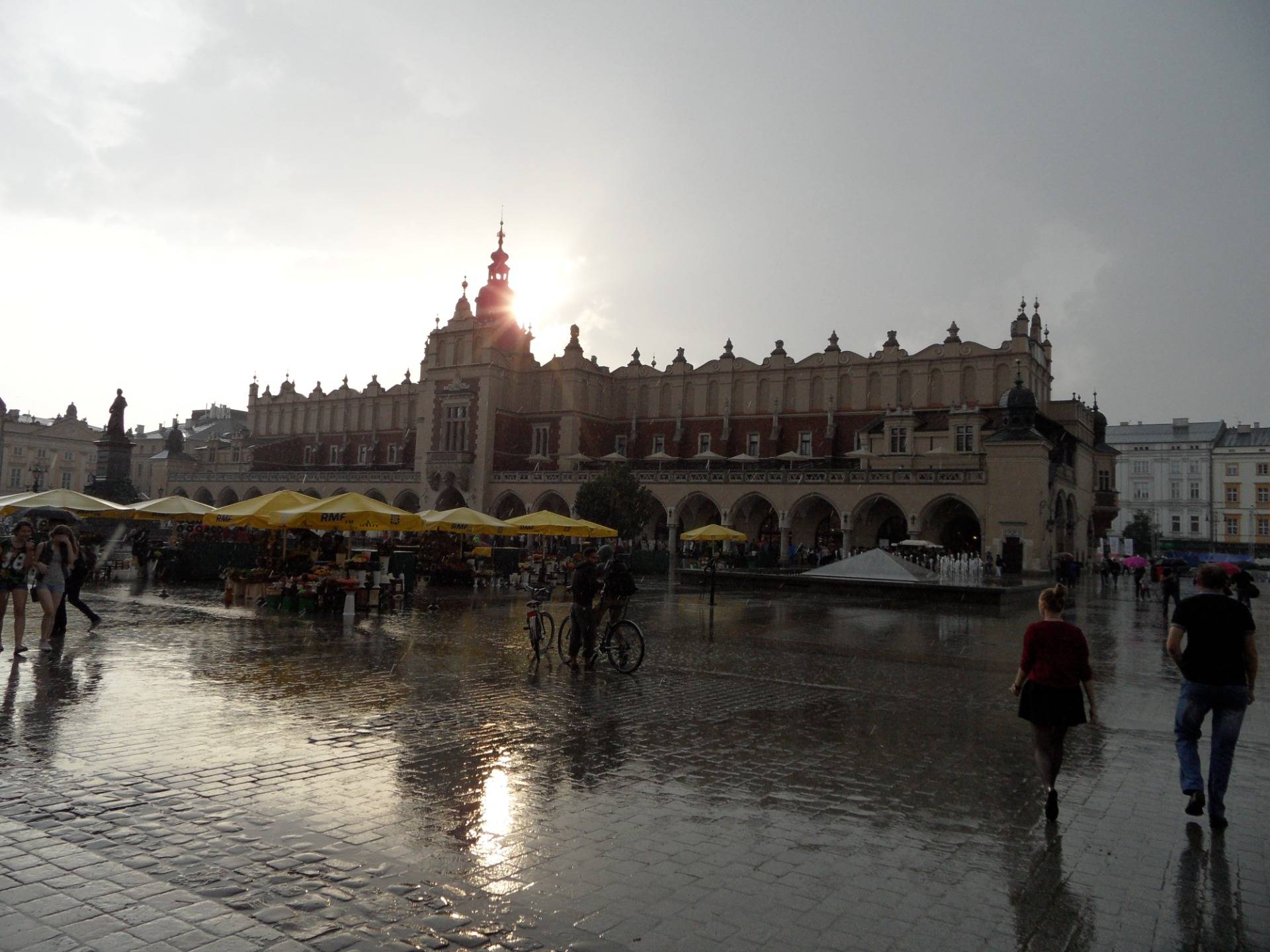
Budovu, ktorú na námestí určite neprehliadnete sa volá Sukienice. Nachádza sa totižto v strede a je dosť veľká. Prvá kamenná budova bola na tomto mieste postavená v roku 1257. Neskôr tu bola postavená krytá tehlová hala, ktorá mala slúžiť na obchod so súknom. V súlade s privilégiami Kazimíra Veľkého, prichádzajúci kupci mohli predávať iba vlastné tovary a iba na tomto mieste. Gotická budova zhorela pri veľkom požiari mesta v roku 1555. Následná rekonštrukcia jej dala renesančný nádych.
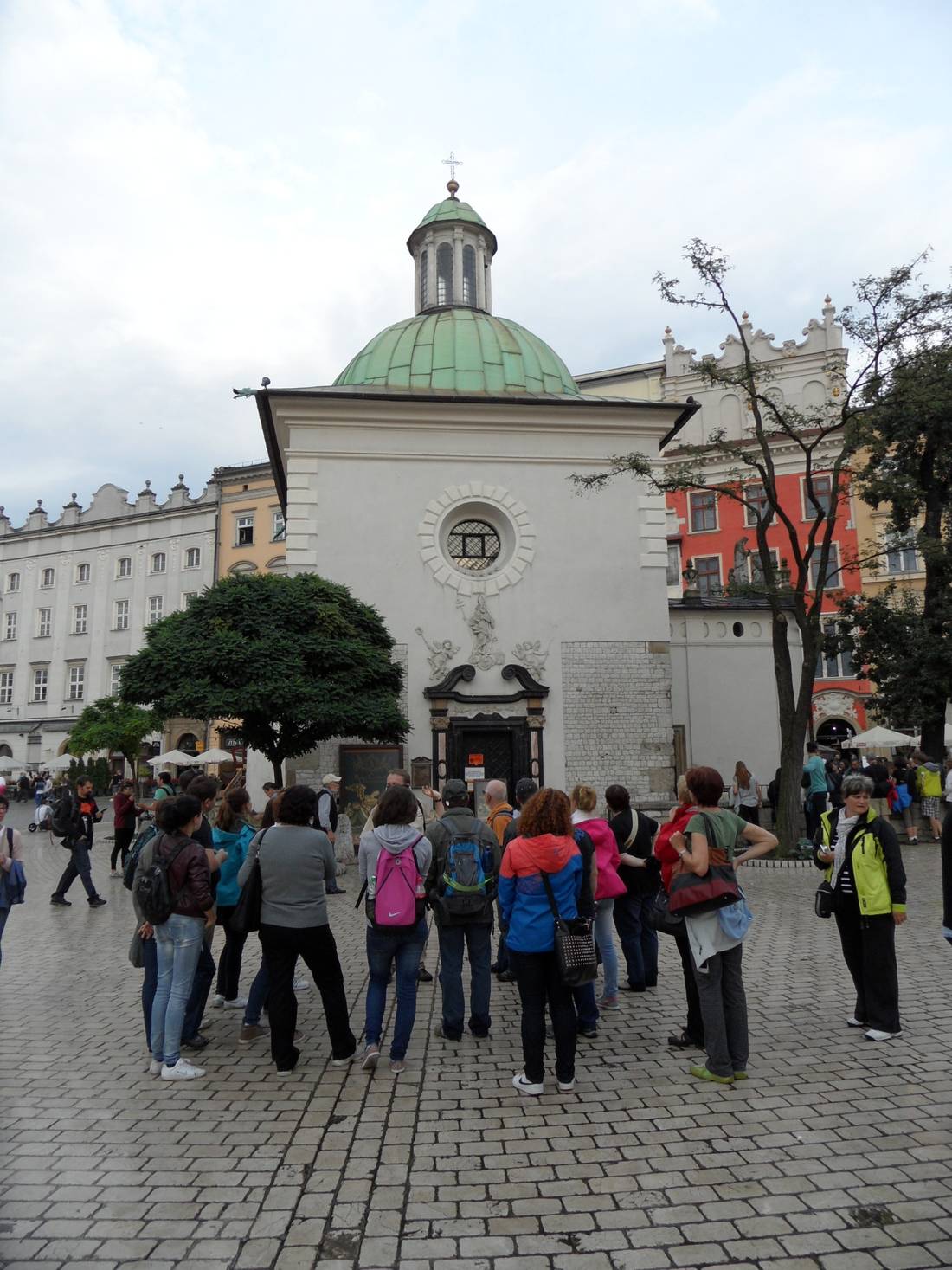
Ďalším kostolom ku ktorému nás vedie náš sprievodca je Kostol svätého Vojtecha. Jeho základy sú pravdepodobne najstaršou stavbou v meste. Prvý drevený kostol stál na tomto mieste pravdepodobne už okolo roku 1000. Prvá písomná zmienka pochádza z roku 1250.

Významnou stavbou na námestí je Pamätník bitky pri Grunwalde. Tu sa 15. Júna 1410 stretli vojská Rádu nemeckých rytierov proti vojskám poľsko-litovskej koalície. Išlo o rozhodujúcu bitku poľsko-litovsko-teutonskej vojny (1409-1411) a jednu z najväčších rytierskych bitiek v dejinách stredovekej Európy. Veliteľmi víťaznej poľsko-litovskej koalície bol poľský kráľ Vladislav II. Jagelonský a veľké litovské knieža Vytautas. Rád nemeckých rytierov viedol veľmajster Ulrich von Jungingen.
Don't Forget: Get Travel Health Insurance!
To make your trip a worry-free experience, TravelFeed recommends SafetyWing Nomad Insurance. It provides comprehensive health coverage while you travel, so you can focus on exploring, not the unexpected. Get a quote here
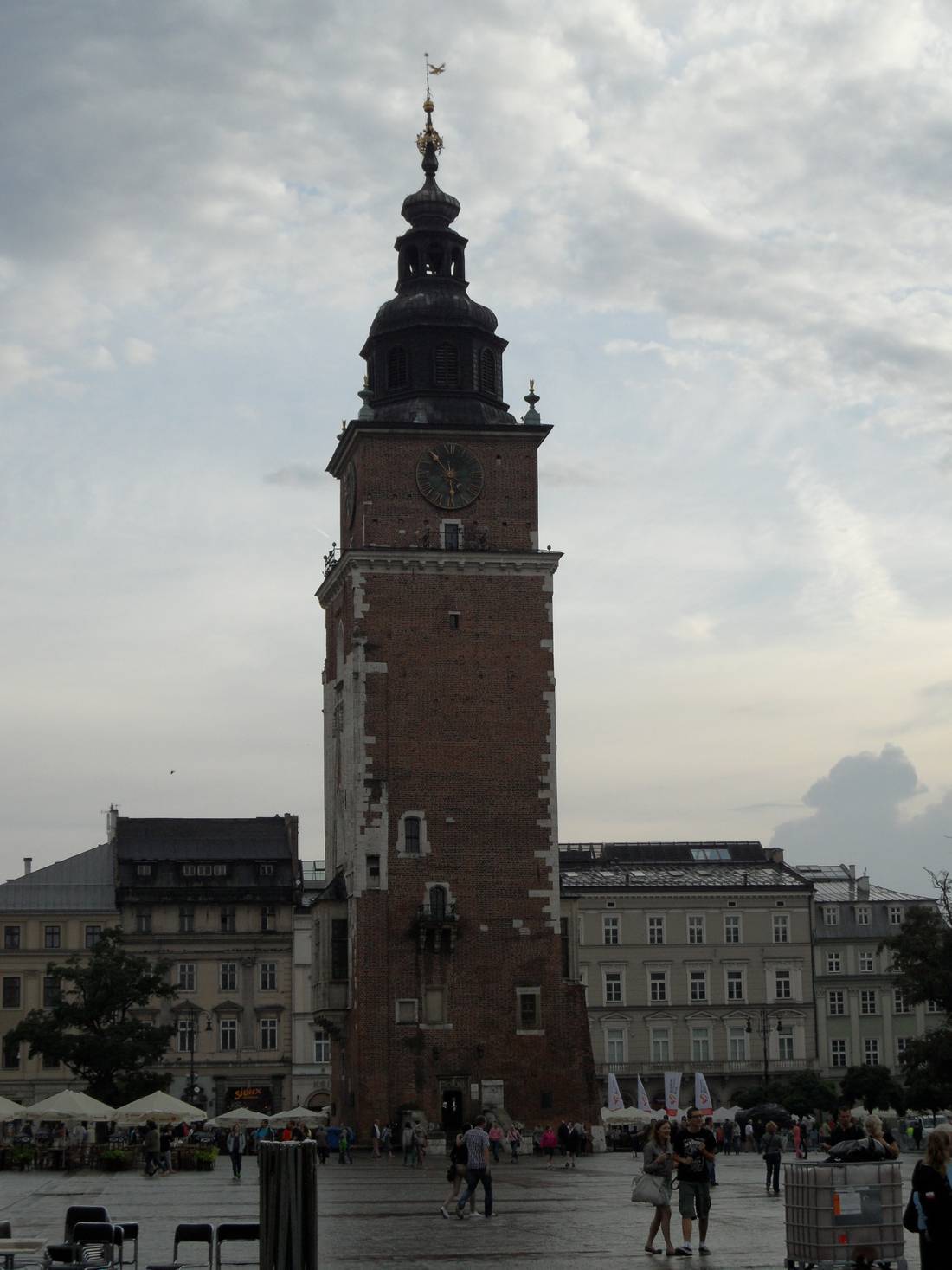
V strede námestia stojí tak trochu osamotene Radničná veža, ktorá siaha do výšky 70 metrov. Je to gotická veža zo 14. storočia. Jej súčasťou bola aj radnica, no tú zbúrali.
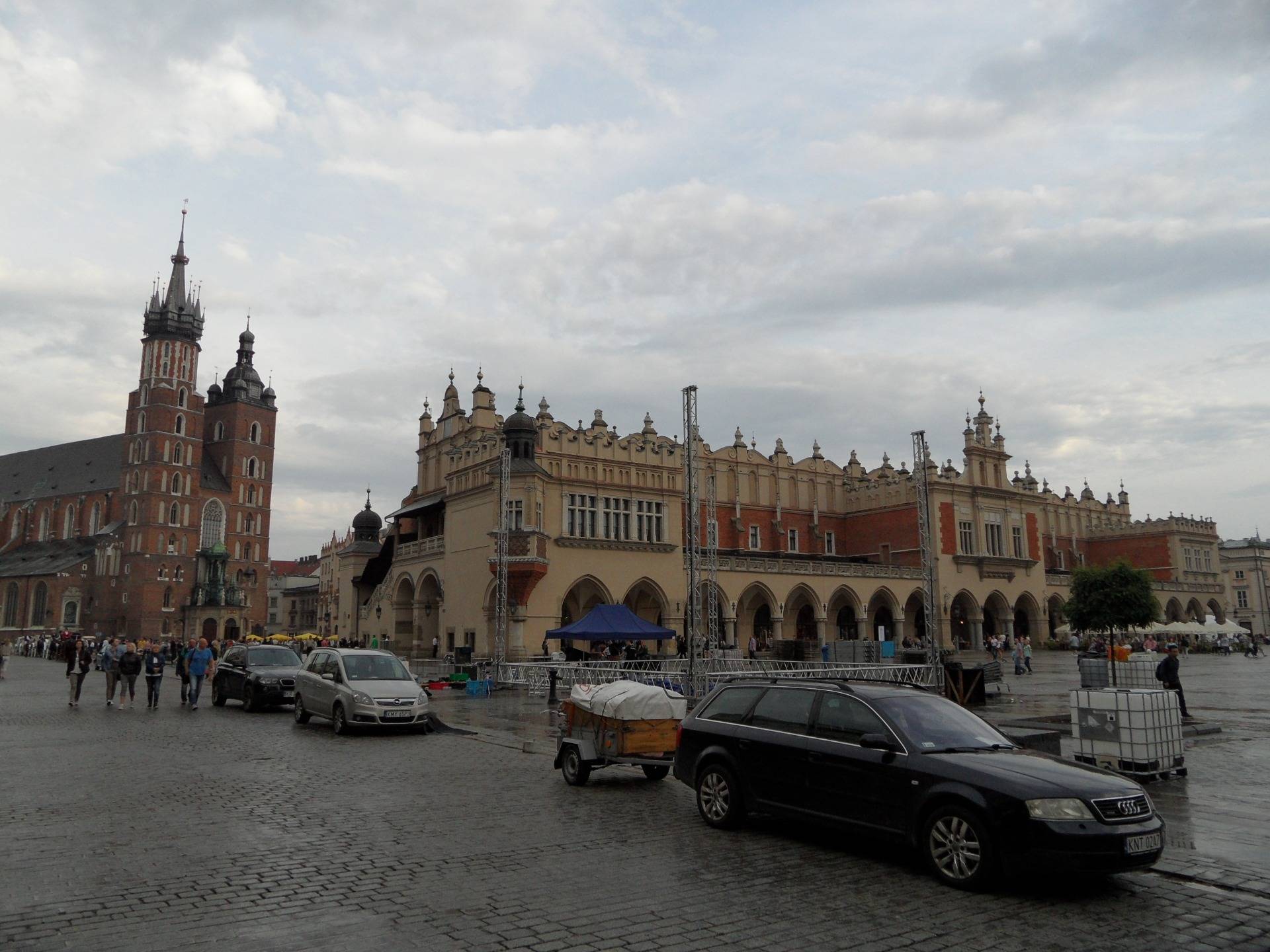
Na záver našej prehliadky vám prezradím čo to o námestí na ktorom sa nachádzame. Námestie sa volá Rynek Glówny a je to vôbec najväčšie mestské námestie v Európe. Vzniklo po tatárskom vpáde a zničení Krakova v roku 1241.
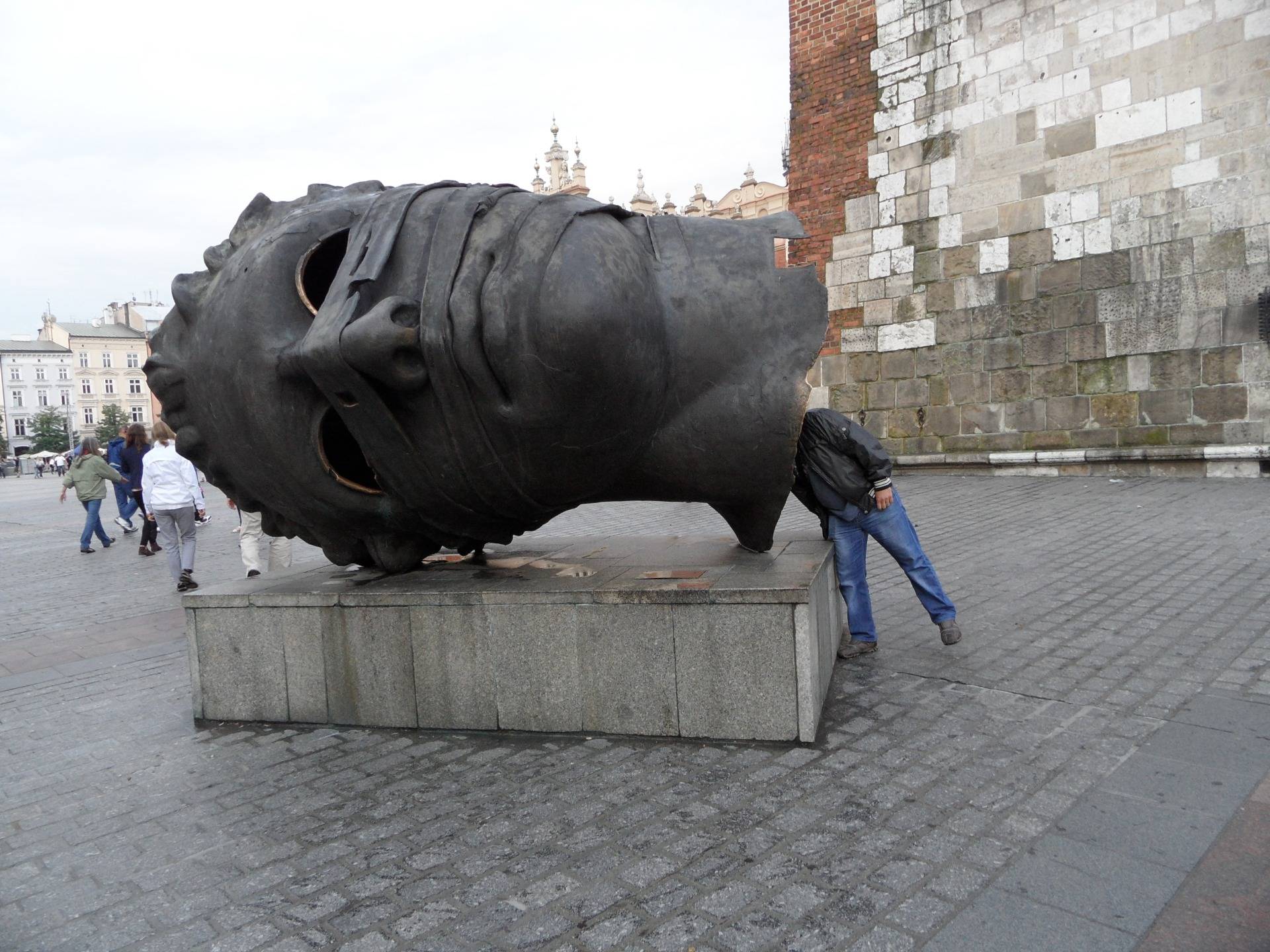
Deň sa už chýli ku koncu a s ním sa končí aj náš výlet v tomto okúzľujúcom historickom meste Poľska. Pred nami je však ďalší deň a my sa tešíme na nové zážitky na ďalšom výlete.
Ďakujem
Travel Resources for your trip to Poland
Recommended by TravelFeed
Flights: We recommend checking Kiwi.com to find the best and cheapest flights to Poland.
Accomodation: Explore the best places to stay in Poland on Booking.com, Agoda and Hostelworld.
Travel Insurance: Medical emergencies abroad can be pricey, but travel health insurance is not. We always use SafetyWing for affordable and reliable coverage.
Car Rental: For hassle-free car hiring, DiscoverCars is our trusted choice with a wide selection of vehicles.
Internet: Got an eSIM compatible phone? Airalo is perfect for reliable internet access during your trip. Just install it before you go, and you're set!
Day Trips & Tours: We recommend GetYourGuide for a variety of well-organized and enjoyable activities.
Travel Planner: Need a hand planning? Our free travel planner chatbot is your personal guide to Poland. Chat now.
Disclosure: Posts on TravelFeed may contain affiliate links. See affiliate disclosure.
